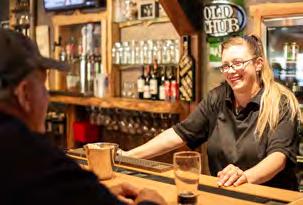

Gunnison 970.641.6691 Crested Butte 970.349.6691


bbre1.com



Gunnison 970.641.6691 Crested Butte 970.349.6691


bbre1.com
bringing dreams home







"History tells us who we are." Find out what makes this valley tick.

Four women caterers who have started local businesses.
Enjoy an update of downtown projects and a new look for IOOF park.
Learn the goings on at the Gunnison Arts Center over 139 years.




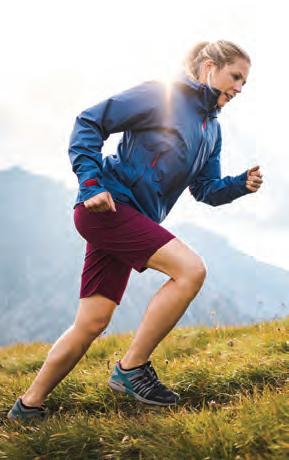












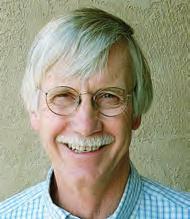


 Constance Mahoney
Constance Mahoney
Welcome to Bluebird Real Estate, a premium home buying and selling experience in Gunnison, Colorado.


Start your home buying or selling journey with Brian at GunnisonProperty.com!

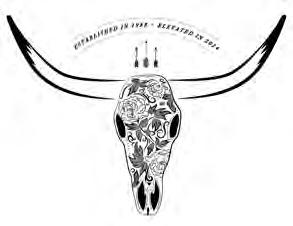
Brian Cooper Broker Associate c 970.275.8022 brian@bbre1.com
Chrissy Ward Assistant to Brian Cooper chrissy@bbre1.com






Thank you for your interest in our magical valley. This year’s edition strongly features the arts, history, outdoors and personalities of Gunnison County. We have a rare combination of natural beauty, mountains, snow, ranching and water sources in the Gunnison Country that make this place a delight for visitors, resi dents, part-time residents and students. We share a pride in our public lands and rivers and hold dear the stewardship of the environment that has been placed in our care.
We also have a resilient business community that we are proud to support — small independently-owned enterprises that enhance our lives with local access to goods and services. Many of them are showcased in these pages, providing a unique interface between visitors and local suppliers. Please take a moment to appreciate their offerings as they form the backbone of our downtown areas.
We are also grateful to have a thriving hospital; our local seat of learning, Western Colorado University; and a growing airport. We have a ski resort with lodg-

ings and majestic scenery. Many fine restaurants and caterers are peppered up and down the valley. All these things add up to a lifestyle in which everyone can enjoy the splendor of our trails, the historic and authentic ranching community and the lush variety of the landscape from Aspen groves to Hartman Rocks. We also have a flourishing arts culture, evidenced by the fact that Gunnison joined Crested Butte last year as a certified Colorado Creative District. In 2023, the valley will host the next Creative District Summit, a prestigious gathering of creative entrepreneurs and artists. Like many mountain communities, we have our challenges. However, the people who make the Gunnison Country their home have a reputation for both resilience and for caring deeply about one another's stories and wellbeing. I hope you will find the accounts of community members and culture printed in these pages inspiring and uplifting. n
PUBLISHER
Alan Wartes
EDITOR
Enid Holden
EDITORIAL
Bella Biondini
Jacob Spetzler
Anna Coburn
John Norton
William Spicer
Caitlin Gleason
Jeffrey Taylor
Bud Bush
Chris Dickey
Mike King
Rachel Branham
Skye Bleakley Jacob Brown David Primus
SALES DIRECTOR
Bobbie Corn
SALES REPRESENTATIVE
Jack Anderson
PRODUCTION MANAGER
Michaela Keefe

PRODUCTION
Libby Marsden
Thanks go to all those who contributed photography. Please see individual photo credits. Thanks to community members who sent in photos of their pets on porches. In addition we would like to acknowledge the following:
Cover Photograph - Oriali Alexandre TAPP - for access to their photo collection
Gunnison Pioneer Museum Gunnison Arts Center Gunnison Chamber of Commerce
Copyright©2022 No part of this publication may be reproduced without the written consent of the publisher. No part may be transmitted in any form by any means including electronic, mechanical, photocopying, recording or otherwise without permission of the publisher. Any work (written, photographic or graphic) which the publisher “hired-out” becomes the property of the publisher. Publisher accepts no liability for solicited or unsolicited materials lost, damaged or otherwise.
For more information regarding this publication or other special publications of Alan Wartes Media, call 970.641.1414, or email publisher@gunnisontimes.com


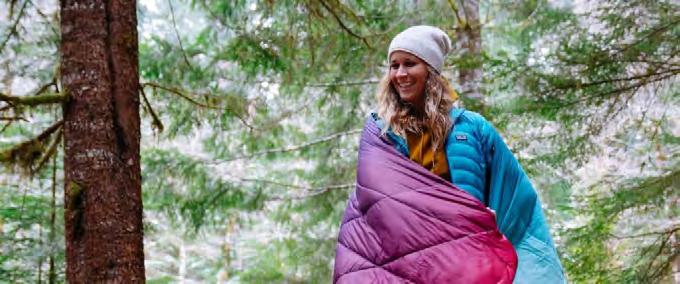


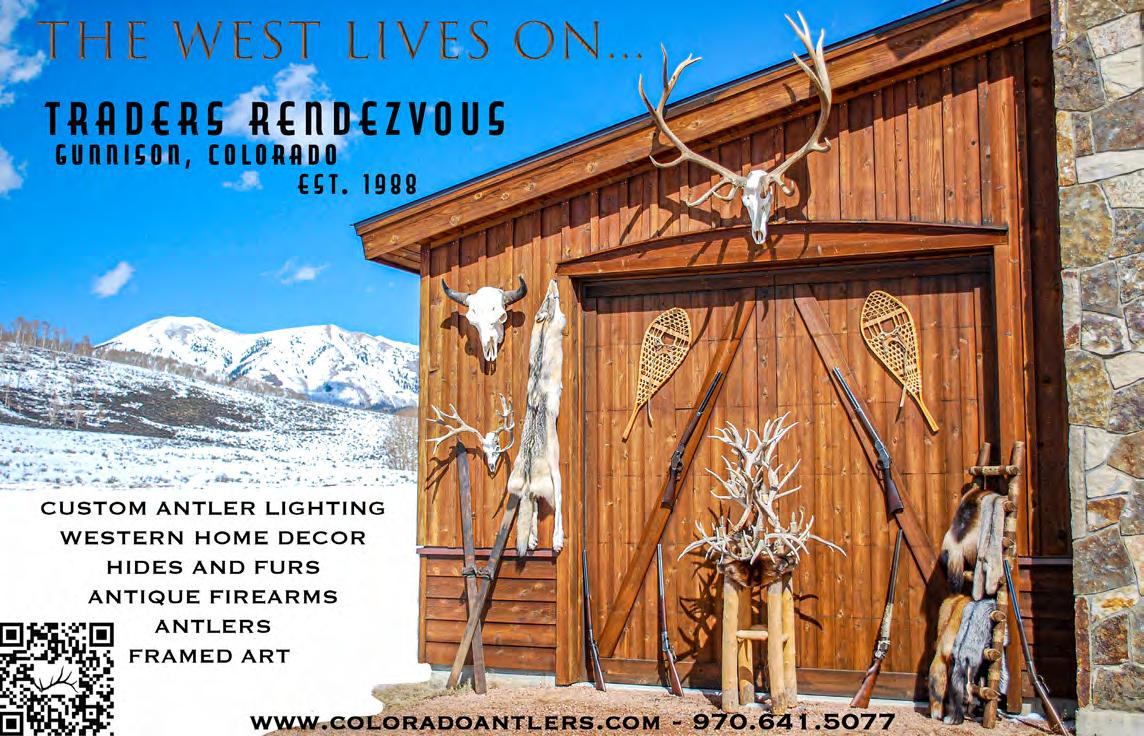

There’s a saying: “History tells us who we are.”
It follows that the preservation of history, and especially local history, is a most important and worthy undertaking. It was with this lofty goal in mind that the Gunnison County Pioneer and Historical Society was formed in 1905. It took the Society another 60 years to achieve their dream of opening a museum, but in 1964, thanks to a generous donation of land by two local families and over half a century’s worth of avid collecting, the Gunnison Pioneer Museum opened its doors at a dedicated 16-acre site on the eastern edge of town. Run by a devoted group of volunteers, it is funded entirely through charitable gifts, membership dues and revenue from summer visitors.
Larry McDonald, Pioneer Society outreach coordinator, history buff and cheerleader par excellence for the Museum, calls the site a campus and the description is apt; more than 30 buildings, many of them historically significant structures in their own right, are scattered throughout a beautiful park-like setting, landscaped with lush grass
and mature trees. It’s an enchanting and enlightening place to while away a summer’s afternoon.
Most of the buildings are packed from floor to ceiling with historical artifacts, mainly from the Gunnison Country, some from further afield, but all with something important to say about the pioneer history of the American West. The sheer breadth and quantity of items is what makes the Pioneer Museum so exceptional. Every element of day-to-day life is represented: clothes, furniture, tools, household items, musical instruments, toys, books and photographs. It’s impossible to explore these collections and not be moved by a sense of what life must have been like for those early frontiersmen and women.
Among those pioneers are some famous names. To start with, there’s the man for whom this city itself is named: Captain John Williams Gunnison was an ambitious young army engineer who, in 1853, was tasked with surveying potential westward routes for the Pacific railroad. His explorations brought him over Cochetopa Pass, through the Tomichi Valley and on to the Black Canyon. You’ll find numerous photos and artifacts from his life and expeditions scattered throughout the museum, including some fine examples of the kind of surveying tools he would have used.
Then there’s Alonzo Hartman, one of the valley’s earliest settlers and Gunnison’s true founding father. In 1872, he established a livestock operation for the Los Piños Agency, in the area known today as Dos Rios. Four years later he was appointed the first postmaster on Colorado’s Western Slope and constructed Gunnison’s original post office, a tiny, primitive structure of rough-hewn logs with a dirt floor and sod roof. It’s the oldest of several historic buildings that have been conserved — how wonderful that it was preserved — and relocated to the grounds of the Pioneer Museum.





Another of the buildings is altogether grander and more finely crafted: the Paragon Schoolhouse, built in 1905 and originally located some six miles north of Gunnison. It exemplifies how much the Gunnison Country had grown, both in wealth and stature within just a few short decades. Built by local homesteader John Outcalt, a skilled carpenter and shipbuilder from New Jersey, the building’s architecture incorporates a number of unusual, nautical themes. The bell tower resembles a lighthouse, while the semicircular library with its large, curved picture windows evokes the wheelhouse of a Hudson River tugboat. The interior is fully outfitted Hardwired on 26

1880 TAPAS & SPIRITS
Classic Spanish tapas with a Colorado flair. Paired with exceptional cocktails & wine. Dinner only. Closed Tues & Wed www.1880tapas.com 206 N. Main St. • 970.707.4331
5B'S BBQ
Award winning BBQ
Catering available. Enjoy our outdoor patio seating.
303 E. Tomichi Ave. Mon - Sat 11 a.m.-9 p.m. 970.641.7360
5bsbbq.gunnison@gmail.com

We are moving! to 405 W. Tomichi Ave. Sometime between July & August.
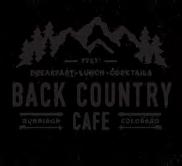
Locally owned, family operated. Breakfast, lunch & cocktails The Bare Family welcomes you to the backcountry. Everyday 7 a.m.-2ish backcountrycafegunni.com 138 N. Main St. • 970.641.4394
BLACKSTOCK BISTRO
Open Mon-Sat at 5 p.m. Wednesday is ramen night. 122 W. Tomichi Ave. 970.641.4394
BUCKEL

Colorado wine tasting for the adventurous wine drinker Fri & Sat 2-7 p.m. & by appt. buckelfamilywine.com

1018 Highway 135 970.349.2071
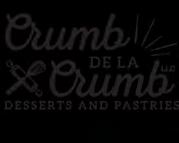
Gunnison’s premier bakery. Wedding cakes, speciality cakes, bakery, parties and events. crumbdelacrumbbake.com 970.596.8128 call or text

Breakfast & lunch. Gourmet sandwiches, salads & soups, vegetarian fare & gluten free options. Deli is OPEN for takeout. Please call to place your order. Wed - Sat 8 a.m.-2 p.m. 108 N. Main St. • 970.641.6266

We hit the spot! Locally owned & operated. Best & biggest handtossed pizzas + more. Pet-friendly, outdoor patio & TVs. Happy Hour everyday 2-5 p.m. Dine-in, take-out & delivery. Gunnisonpizza.com @Gunnisonpizza 303 E. Tomichi Ave.• 970.641.1110

Locally produced products. Organic & naturally good groceries. Open Mon - Sat 8 a.m.-7 p.m. gunnisonvitamin.net 804 N. Main St. • 970.641.5928
Enjoy some of the finest selections of sandwiches, wraps, paninis, bakes treats, shakes, ice cream, frozen yogurts, Jamaican Blue Mountain coffee and smoothies. Mon - Sat 8 a.m.-9:30 p.m. Sun 12-9:30 p.m. 728 N. Main St. • 970.641.9876
Italian cuisine, catering available. Dine in, take out, delivery. mariosgunnison.com 213 W. Tomichi Ave. 970.641.1374
Serving lunch & dinner Deck seating. Everyday 11 a.m.-9 p.m. olminersteakhouse.net 139 N. Main St. • 970.641.5153
Family restaurant. Full bar. Patio and dining room seating. Online ordering gunnisonpalisades.com


Sun - Thur 11 a.m.-9 p.m. Fri & Sat 11 a.m.-10 p.m. Find us on social media. 820 N. Main St. • 970.641.9223
Pizza, sandwiches, pasta salads. Full bar, free delivery Thurs - Mon 11 a.m.-9 p.m. piezanspizzeria.com 800 W. Tomichi Ave. 970.641.5255
Voted best burger since 2009. Burger, beer, coffee and more. Breakfast, lunch, dinner Everyday 6 a.m.-11 p.m. powerstop.com 905 N. Main St. • 970.641.2328
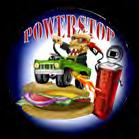

Serving West Coast tacos and Mexican inspired street food for lunch (and occasional brunch) See our social media or call for hours.
206 N. Main St. (Behind 1880 Tapas & Spirits) 970.209.6707
@tacocattacocart
THE COFFEE TRADER
Coffee House featuring fresh baked pastries, burritos and made to order breakfast sandwiches. Dine in, take away, drive thru. thecoffeetrader.com 700 N. Main St. • 970.707.4284
THE DIVE
Come Dive in! Great food, amazing beer & even better company. TheDiveGunnison.com 213 W. Tomichi Ave. 970.641.1375

Fine chocolates, hand-made fudge, ice cream, caramel apples, cappuccino/espresso, fresh baked cookies, giant peanut butter cups, kids candy, boxed chocolates for take home gifts. We love visitors, second home owners and locals. Open late. 314 Elk Ave. Crested Butte, CO

Open breakfast & lunch 8 a.m.-3 p.m. Bagels and schmears, sandwiches, salads & pastries. In the winter, look for our daily specials. 131 N. Gunnison Ave., Lake City, CO 81235 • 970.944.0399

Serving elevated comfort food and fantastic craft cocktails with exceptional service. Join us for an experience to remember. Reservations suggested. 3-8:30 p.m. Breakfast Sat & Sun 9-11 a.m. www.climbeatery.com 808 Gunnison Ave., Lake City, CO 81235

 BY JOHN NORTON — TAPP EXECUTIVE DIRECTOR
BY JOHN NORTON — TAPP EXECUTIVE DIRECTOR
It was 1985. I was new to the valley. Taking a hike somewhere up in the Gothic Valley with Rick Borkovec, a guy somewhat famous for popularizing the telemark ski turn, we sat on a trail’s edge for a snack. Finishing an orange, I sailed the peel 20 feet off the trail and into some brush.

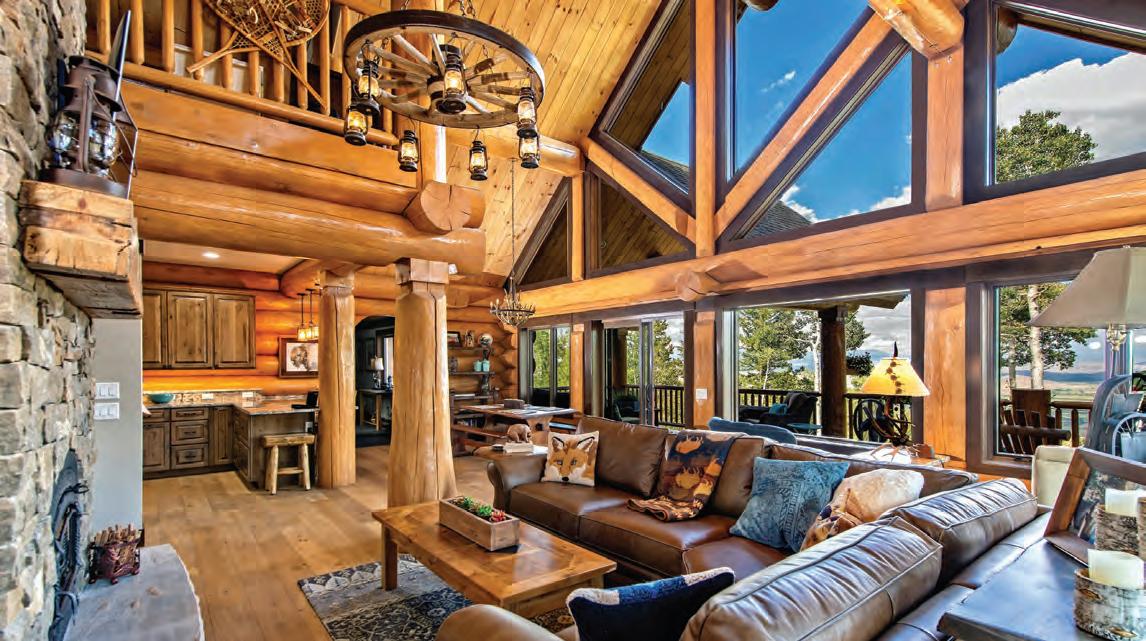
“You should pick that up,” said Borky, “an orange peel takes a couple years to decompose.” So I did. And even as I did, I was wondering why, when it was so unlikely that anyone would see the peel in such a remote place.
Flash forward 35 years, and our remote little valley is not so remote anymore. More and more people are enjoying our spectacular pub-
lic lands, including here in our “undiscovered” valley. And Borky’s admonition about littering sounds in my head whenever I feel like getting lazy or careless in our outdoors because it’s never been more important or timely.
I believe our trails system here — maybe the best in America, if not the world — can handle more people-pressure and still retain its beauty and functionality, if everyone using it is mindful.
I’ll take an example from fishing. Our waters have never been fished with more pressure. And our fishing has never been better. How can that be? My answer would be that our rivers and streams are cleaner than they were in 1985. Our air is also cleaner. And most fishermen practice careful catch and release of our trout. People have taken steps to make our fishing better even with the increased pressure.
Likewise, trail users can be mindful about keeping our backcountry as beautiful, or even more beautiful, than it is today.
The Leave No Trace principles are as good as any:
1. Plan ahead. For most of our day rides or hikes, an unexpected trip to the bathroom is the most likely unplanned event. A Pact kit (pactoutdoors.com) will help keep our landscape clean. Kits can be found at Chop Wood
in Crested Butte or the Gothic visitor center.
2. Hike and bike on durable surfaces. Unless you’re hunting mushrooms.
3. Pack it in and out. Obviously. But some people still don’t do it.
4. Leave what you find. Our flowers are beautiful but don’t last long on the kitchen counter.
5. Minimize campfire impacts. With the north valley’s move to designated camping sites, campers will find that all camps come with a fire ring. But try as we might, beer cans still do not burn to ash.
6. Respect wildlife. Some friends saw two dogs take down a baby elk in the Gothic Valley a couple years ago. That’s an egregious example of not respecting wildlife and there are other, milder examples. Be mindful that this is not an easy place to live for either humans or animals.
7. Be mindful of others. In my experience, this mostly comes down to noise. In a pretty pristine spot last summer I was passed by a group of RZRs. One had a boom box affixed to its roof, blasting some rap music. It was jarring.
I’m an optimist and a great believer in human ingenuity and our ability, individually and collectively, to make a positive difference. We can all work a little to keep our valley a slice of paradise. n


CHECK OUT OUR PARKS!
Discover Legion and Jorgensen Parks on the east side of town! You can fish in town at Pac Man pond and hang out at the skate park at Jorgensen Park!


Need to cool off?
Want to try rock climbing?
The Recreation Center at 200 E. Spencer Ave has a pool with a water slide and climbing wall to have some fun on! Call (970) 641-8060 to find out open swim times and climbing wall hours! While there run around the tumble room too!
If you want to ride bikes or hike from town, head to Van Tuyl Ranch on the northwest corner of town! While you are there, play some pickle ball at Char-Mar Park.

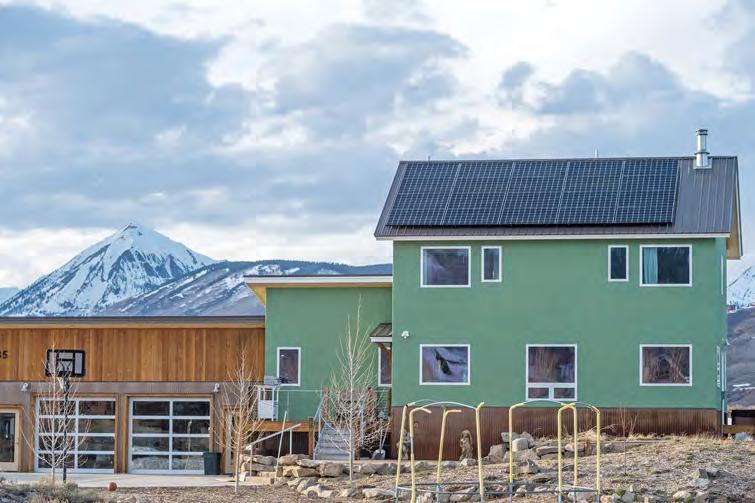
Have lunch downtown at IOOF Park and play in the new water feature!
For questions or additional information, please contact the City Clerks Department at (970) 641-8080.

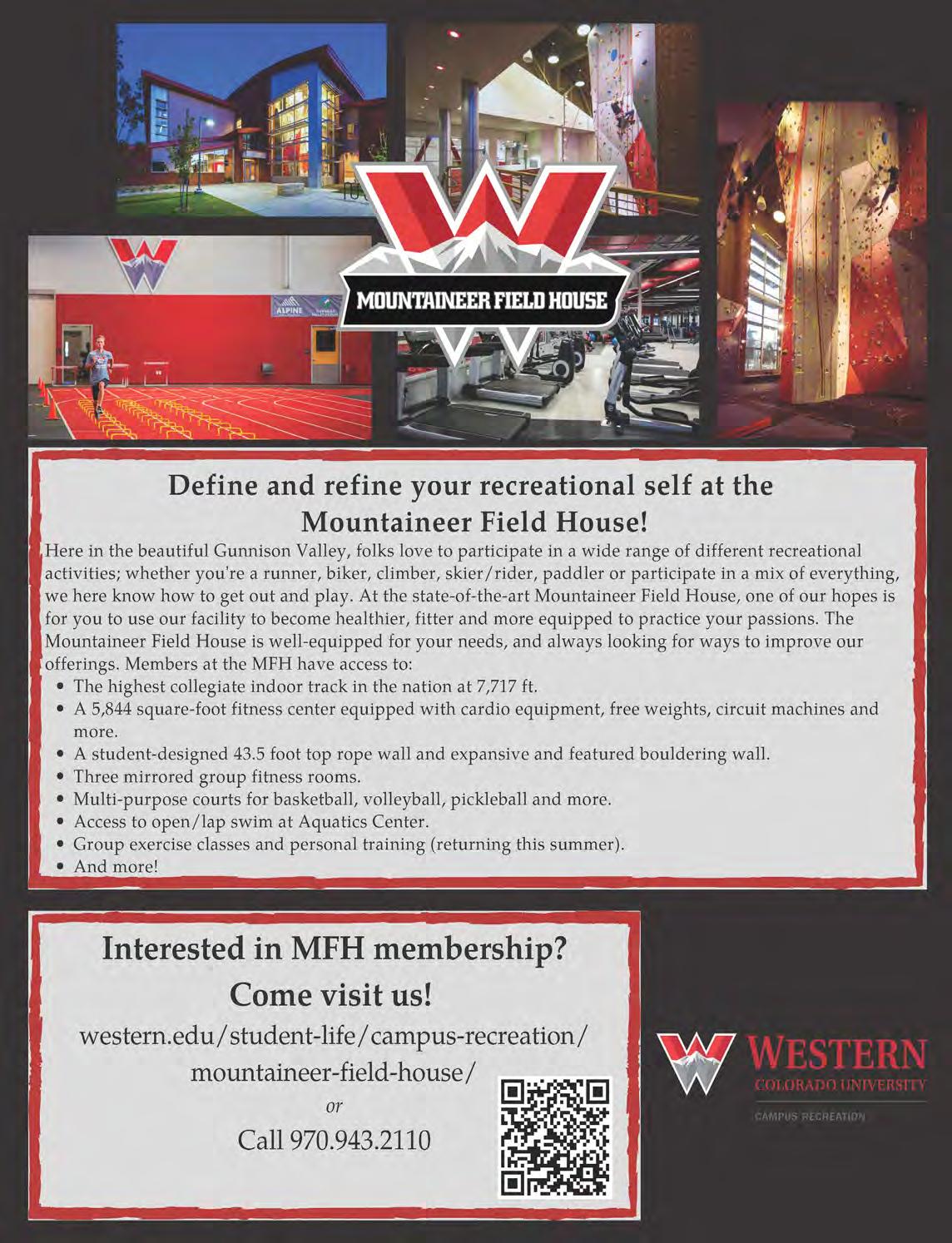
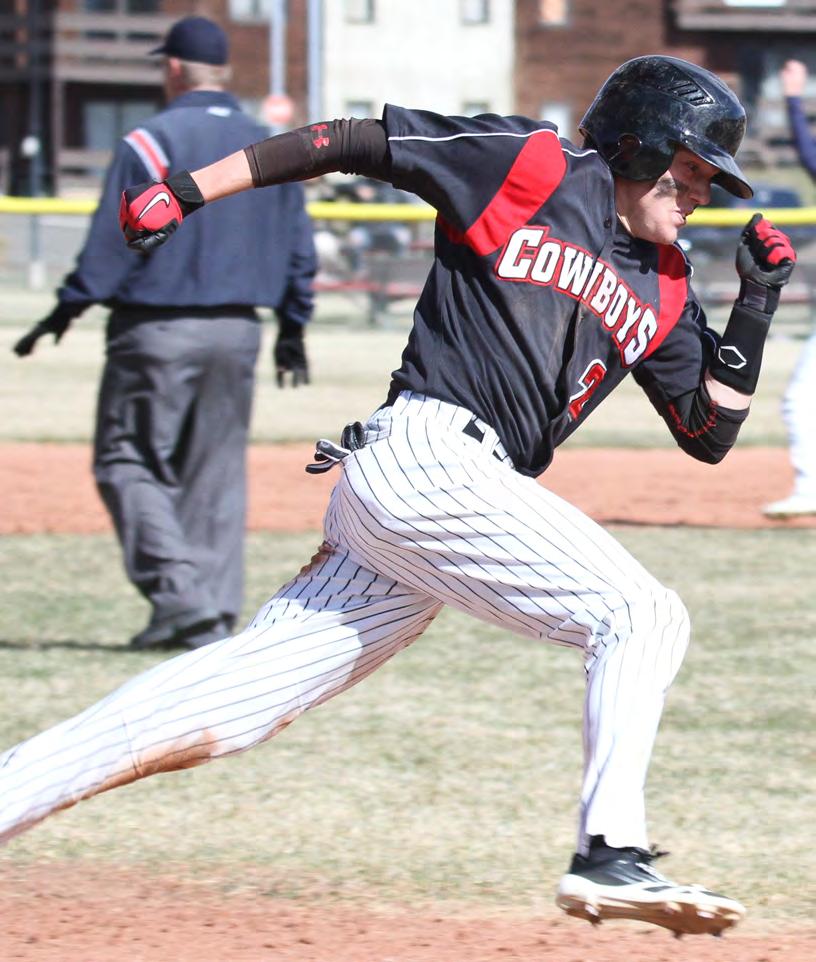 BY JACOB SPETZLER
BY JACOB SPETZLER
Six months out of the year, Taylor Miller, a fourth-generation Gunnison native, starts his work days in a weight room in Rancho Cucamonga, California. He is responsible for the Single-A Quakes minor league baseball team — an affiliate of the LA Dodgers. He trains the athletes for eight to 10 hours, then the team retires to the hotel for two hours of rest before playing a league game in the evening. This happens six days a week for the entire baseball season.
Looking out at the world from Gunnison, it can seem like a massive leap from the Western Slope to working with an entity like the Dodgers. Miller’s story proves it’s not only possible, but attainable.

The Millers are one of the oldest families of European descent in the valley. For over 100 years, the family owned and operated two Gunnison mainstay businesses – Miller Furniture, which was sold in 2019, and the Miller Funeral Home, which shuttered in 2005. His
 Matt
Matt
mother, Tracy Lavato, still lives in town, and Miller himself returns for around four months of the year during off season.
Miller wound his way through all of the Gunnison sports and education institutions. He was a three-sport athlete in high school — baseball, basketball and football — and a three-year letterman in baseball and football. In college, he played football and baseball for one year at Lewis and Clark College in Oregon before transferring to Southern Utah University, where he played football for a year. He then transferred for a third time,
this time coming home, and finished out his undergraduate degree at Western Colorado University.
After graduating, he traveled in Europe for a little over three months before returning to Western to enroll in the exercise sports science masters program. While in school he worked three degree related jobs — as a graduate assistant in the Gunnison Valley Health sports medicine clinic, as the NCAA sports strength and condition assistant and head baseball coach for the university’s club team.

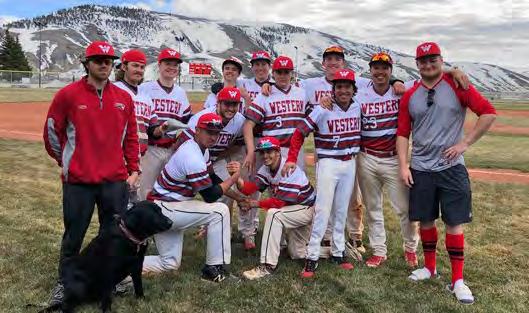

From there, he took an internship at Loui-
siana State University in the baseball program before being recruited by the LA Dodgers to work with the Quakes. His current schedule is incredibly intense from spring training through the end of baseball season.


“Spring training was 58 days in a row of 12 hour days,” Miller said. “The grind is very real.”
During the regular season, the Quakes play six games a week — alternating between home and away weekly. Primarily, they get around the area by bus. Miller says he expects the team to go far in the postseason this year, but once it’s all finished, he will spend
a month in Arizona training new draftees before flying south to coach Quake-affiliate teams based out of the Dominican Republic.

Then, finally, he’ll return to Gunnison for four months to decompress. He works with each individual Quake athlete remotely during the off season, but his schedule lets up enough that he’s able to reach back into his Gunnison roots and identity.
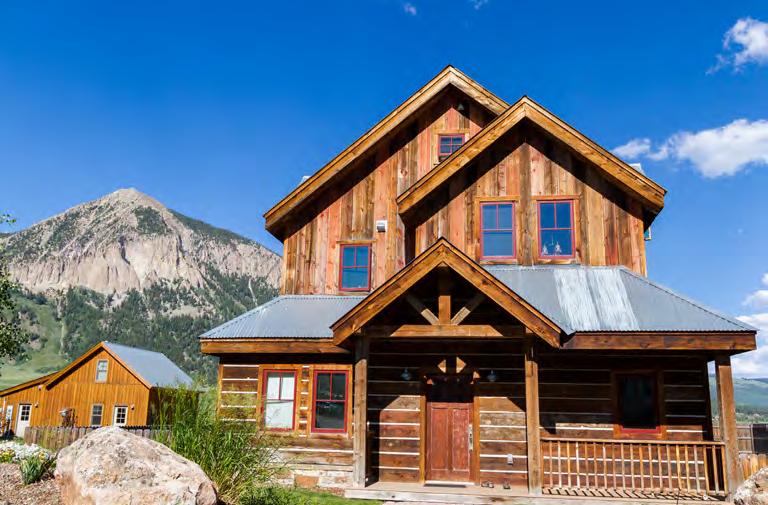
“It’s relaxing,” he said. “Being able to go mountain biking, snowboarding, hiking. I can do all the outdoor activities that I can't do during the season. Being from Gunnison born and raised — that’s a lot of who you are. Being able to escape in the outdoors. It’s honestly a really perfect balance, I think.”
Looking back on his trajectory, Miller says a few things pushed him to pursue his dreams of working in major league sports. The first would be a strong belief in hard work.
“Just because you grow up in Gunnison doesn’t mean you can’t reach your dreams,” he said. “A quote I always tell myself is ‘choose your hard.’ Sure, it’s hard to get into a six-month grind but it’s hard to look back at your life and feel regret. Everything in life is hard, it's just your perspective.”
Miller also says lessons he learned in his early sports education have been instrumental in his professional success.
"I would say I had two very impactful coaches in Gunnison: Tom Percival, the baseball coach, and Brandon Haas, an assistant football coach who coached our conditioning. I would equate a lot of my personal success to those two gentlemen." n


 Miller during a brief coaching stint at LSU.
Miller during a brief coaching stint at LSU.

(Editor’s note: This is the first of a series of four articles scattered throughout the magazine featuring the work of four gifted female chefs who labor to “feed the people” in the Gunnison Country.)
This is the year of weddings. According to a survey from The Knot, a popular marriage website, 2022 will have more weddings than any year since 1984 due to postponements from the pandemic, and many “Save the Dates” on refrigerators have the Gunnison Valley as the destination.
“Even people that don’t have ties here want to get married here,” said Emily Harwell of Crested Butte’s Personal Chefs. Welcoming these weddings with open arms are hardworking businesswomen in the valley, crafting not only a meal but an atmosphere for one of the most memorable days of people’s lives.
Chef Emily Harwell has worked for five years with Chef Dana Zobs, owner of Crested Butte’s Personal Chefs. The team is already accumulating event bookings for 2023. “It’s 50% computer work and 50% cooking,” Zobs said. Zobs ran the sushi bar at Lil’s in Crested Butte from 1996-2002, initially camping out of her Honda Civic up the Slate River. Zobs then moved to San Francisco for five years.
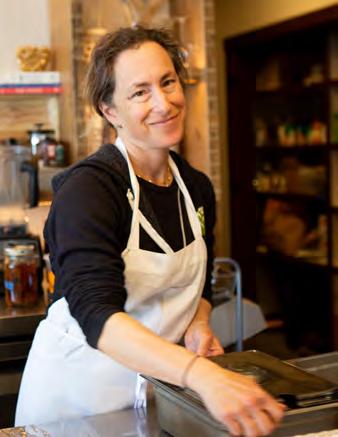

“I wanted to get out of food, which is a weird place to go to get out of food,” she said.
The detour to the Bay Area ended back in the valley, ready to begin her own personal chef business in her early 30s. In partnership with longtime friend Stacy VanAernem, Crested Butte’s Personal Chefs was created in 2007. Zobs is now the sole owner and with the core team of three, Zobs, Harwell and Ben Homuth, they try to keep any stress

at Personal Chefs to a minimum.


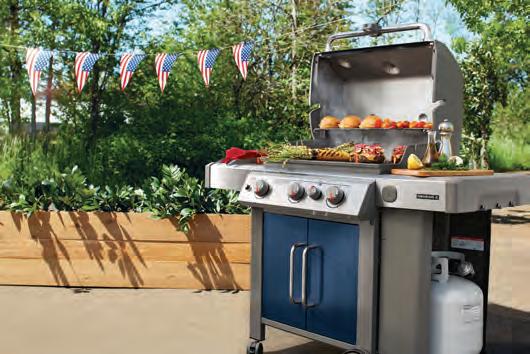
“Anxiety and pressure — you taste it in the food,” Zobs said.
A sitdown lunch together at 1 p.m. with silverware and a napkin is a priority that helps slow down a chaotic workday. Both Zobs and Harwell went to culinary school, spent time in San Francisco and knew they wanted to be chefs at an early age. They are both also moms and try to keep a healthy and fun life outside of cooking.
In early April, Harwell and Zobs were preparing pavlovas filled with Paonia peaches, spiced honey and pistachios for a dinner at Buckel Family Wine. It could be assumed that Personal Chefs only serves an elite demographic, but Zobs said that they cater to everyone, giving the example of the wine dinner at Buckel Wine as she chopped brussel sprouts.
“All the guests are hard working locals who own businesses,” Zobs said. Personal Chefs offers the community family meals to go every Tuesday and Friday, as well as cooking intimate dinners and catering small gatherings. Local farmers and ranchers supply Personal Chefs with most of their ingredients. Mountain Roots Food Project’s annual Feast in the Field is one of their favorite events.
“I love the whole process of being connected to where your food comes from and how important that is,” Harwell said. “I love food.” n

with authentic classroom paraphernalia. It’s fascinating to stand there and imagine what it must have been like to receive one’s entire schooling in such a small space, with a single teacher and perhaps a few dozen classmates.
Gunnison’s growing affluence and selfconfidence during those early years is witnessed in other areas, too. For example, the museum houses an extensive collection of historic newspapers. According to McDonald, by the late 1800’s Gunnison was home to more newspapers than any


other county in Colorado. Not only was the number of publications vast, it was also reflective of the county’s strong political diversity - papers from that era include the Gunnison Democrat and the Gunnison Republican. One of the early newspapers represented is the White Pine Cone, named for the remote mining town. Apparently, so little of note happened during a typical week in White Pine, that the editor frequently resorted to making stories up.
As in other areas of the museum, though, what brings the history to life so vividly are the accompanying displays. Adjoining the newspaper collection is a fully recreated print room, complete with cabinets full of typeface, engravings for images and the printing presses themselves. These fearsomely complex machines have more knobs, wheels and levers than a steam engine and will surely delight anyone, like myself, with an affinity for mechanical devices.
Talking of steam engines, no review of the Pioneer Museum would be complete without mention of the narrow gauge railroad exhibit. Taking pride of place on the museum grounds, this open-air display includes some fine, historical rolling stock
· Multiple unit layouts, which can accommodate from 2 to 5 people in the traditional ‘Tourist Court’ configuration.
· One stand-alone cabin that lodges up to 9 individuals.
· All units have fully stocked kitchens.

· Easy access to Hartman Rocks, downtown, fishing, hiking and biking. Directly across the highway from public access to the river.

· All units pet friendly and non-smoking.



· Over 3 acres of heavily treed property with outdoor group spaces, grills, fire pits, play and picnic areas.

Cinder-Ella, star of the D&RG. Courtesy of the Pioneer Museum

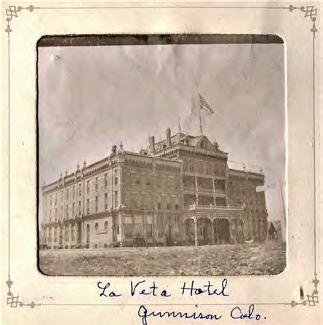
and one particularly famous locomotive. Known affectionately as Cinder-Ella, she was built by Baldwin of Philadelphia in 1882 and started working for the Denver & Rio Grande Railroad (D&RG) in April of that year. Through the early 1940s she was employed on various lines around southwestern Colorado, before becoming something of a poster child for the D&RG and shown at railroad themed events across the country. Finally, at age 70, she became a movie star, taking a lead role
in the 1952 film “Denver & Rio Grande”. Her fires were extinguished for the last time in 1955, but today her mission is to remind thousands of visitors a year about the golden age of steam and the pivotal role of railroads in building the American West.


The railroad is not the only mode of transport to be spotlighted at the Pioneer Museum. There’s a wonderful display of Hardwired on 28

horse-drawn vehicles: everything from an iconic prairie schooner, the kind of covered wagon in which many pioneers would have first arrived in the county, to a magnificent 1870 hearse — the stately carriage in which some of those same pioneers might have taken their final journey.
And then there’s the antique car collection, an entire “museum within a museum”, containing over 75 vehicles dating from the early 1900s through the 1980s which no auto enthusiast will want to miss. Built around an initial collection of 25 cars donated by antique car restorer, Andy Mallet of Delta, the display has grown over time to include a number of locally sourced vehicles. It’s a broad and diverse collection. At one end of the spectrum there’s the 1908 Oldsmobile Touring Car, a car
so ancient that its construction appears to have more in common with exhibits in the horse-drawn display, a true horseless carriage. At the other extreme is a 1959 DeSoto Firedome, a giant, exuberant excess of chrome and fins: a car whose two-tone paint and flamboyant interior epitomize the heady optimism of the 50s and 60s. In between can be found any number of sedans, coupes, roadsters, wagons, jeeps, and given Gunnison’s ranching heritage, a wide variety of ranch trucks.
Not surprisingly, ranching history is on prominent display throughout the museum, not just in the automotive collection. There are saddles, chaps, boots, bridles, miscellaneous agricultural artifacts as well as a lovingly recreated blacksmith’s shop. Perhaps most poignant, though, is an entire wall devoted to cowboy hats where each is accompanied by the name and often
a photo of the person who wore it in life. These are no pristine exhibits; faded from years in the harsh sun, stained with sweat and dirt, they’re a touching tribute to the generations of hard-working cattlemen and women who shaped the Gunnison Country and helped to make it what it is today.
What this demonstrates is that history is ultimately about people, not things. The things are what are left behind, but their gift is to teach us about the people who left them — people like Lewis Easterly, whose drum hangs on a wall in one of the museum buildings. A little worn and tattered, it appears at first glance to be a child’s toy. But when Easterly played it as an 8 year-old boy he was not marching in a school band. He was drumming a company of Union troops into battle at Shiloh, as the youngest enlisted soldier in the Civil War. The impact on one so young of witnessing first hand
On Father’s Day in 2017, in a newly-landscaped lot off Main Street, Burnell’s food truck opened in Gunnison. Denise Reinert started Burnell’s with her husband, Kevin.

“One of my dreams of my life — oh, maybe I’ll just get a food truck when I retire,” said Reinert. “I’ll be like in the outerbanks of North Carolina somewhere slinging some kind of food item out of a food truck.”
Then, she changed her mind. “Well,” she asked herself, “Why don’t I do it now and here while I have more energy than when I’m 70?”
Before Burnell’s opened, the Reinerts owned the Elizabeth Anne Bed and Breakfast in
Crested Butte, serving french toast that eventually made its way onto Burnell’s breakfast menu. The off-seasons were long and hard at the bed and breakfast. Eventually, they closed the Elizabeth Anne and moved down to Gunnison. Soon after, they opened Burnell’s. The off-season slump proved to be the same for the food truck.
Since 2017, Burnell’s has moved to a couple different locations — inside the Gunnison Vitamin and Health Food Store

and a lawn near Absolute Miracles Hair and Nail Design — until finally, Reinert has leaned into the catering world and providing food at several events at the I Bar Ranch this summer rather than being parked in any one place in the valley.
“I want to find something in the winter that works for us,” Reinert said.
Over 25 years ago, Reinert visited her brother in the Gunnison Valley. She quit her job as a health and P.E. teacher and moved to Crested Butte. She taught ski school at the Crested Butte Mountain Resort, and, like Zobs, zeroed in on Crested Butte’s restaurant industry. She prepcooked at Teocalli Tamale when

one of the Civil War’s bloodiest battles is unfathomable but Easterly survived, and after the war he moved out west and settled in Gunnison. He went on to become one of the county’s most prominent cattlemen and lived here until his death at the ripe old age of 90.
It’s stories like these that make the Gunnison Pioneer Museum such a unique and special place. Whether you’re a visitor, a newcomer or a life-long resident, you’ll be richly rewarded by spending a few hours or even a few days touring the grounds, enjoying the displays and poring over the exhibits. You’ll come away with a fresh perspective on how the Gunnison Country came to be, the people who made it, and what all of this has to tell us about who we are today. n
it first opened. She met Kevin at the Brick Oven Pizzeria when she was bartending and where he waited tables in the evenings. Over the last two decades, Reinert has worked on and off at Marchitelli’s, especially during the winters.
Like Personal Chefs, Burnell’s is gathering bookings well into 2023.
“I’ve been getting a bunch of calls for graduation parties, like high school graduation and college graduation,” Reinert said.
The name “Burnell” comes from Kevin’s late mother’s name. Burnell’s offers Southern and Southwest-inspired cuisine with their own unique twists on Po Boys, fried chicken sandwiches and polenta.

“I feel like I have a lot of creativity in me,” she said. “I’d always think [that I would do] some kind of art, I guess. It’s food art.” n

111 S. 10th St. Gunnison, CO | 970.641.3373

Mon-Fri 8 a.m. - 5 p.m. gunnison.floorstogo.com Call us for all of your flooring needs.



The closest thing to ocean front property in the Gunnison Valley might be on the Blue Mesa Reservoir, but you’ve probably heard about the “Ocean Front Property in Arizona” if you’ve ever tuned in to country music radio. Gunnison is home to one of the greatest country music songwriters of all time who wrote that song and who was inducted into the Country Music Hall of Fame last year — and that would be the one and only Dean Dillon.
There is a gentle humility that precedes this legend, partly from his upbringing and partly from his preference for crafting melodies rather than performing. Dillon grew up in humble surroundings in rural Tennessee, before deciding to hitchhike to Nashville at the age of 17 to find his way in the music business. His tall slim stature is accented by long, silver blond hair and a prominent parallel mustache, like bull horns pointing down, with a matching goatee.

Dillon marches to his own beat and sings from his heart. In one of his first meetings with a record executive, he was told to cut his hair, which abruptly ended the meeting for Dillon.
“Guys like me were taught that every time you sit down, you try to write the greatest song
ever when you put pen to pad. I just refused to do the other thing — writing with a formula for radio,” Dillon said. “I had guys come into my office and want me to do it, and I’m like, I’m sorry, you’re walking through the wrong door if you’re wanting me to enter that scope … and I promise you this, if my heart’s not in it, it’s not going to be worth a damn and I ain’t doing it. My mentor was a guy named Hank Cochran who wrote 'Make the World Go Away’ — beat that.”
At age 7 Dillon got his first steel string Stella guitar. “It would rip your fingers off,” he said, referring to the coarse steel strings. “I saw the Beatles on Ed Sullivan and went to my room and wrote my first song. My first electric guitar was a blond Telecaster, which got stolen. I landed on classical guitars with gut strings for the ease with which they play. The guitar I wrote ‘The Chair and Ocean Front Property’ on, I gave to George [Strait] for a birthday present. I still have the Washburn that I used on the road when I started making records. I have one of Kent Viles’ Dobratos [a Gunnison local manufacturer], and a lot of my songwriter and artist friends have taken them back to Nashville. They’re all over the studios now. My favorite guitar for the last eight to 10 years — she’s custom built by Tom Bedell from Bend,
Oregon. It’s the best custom gut string guitar in the world. His father started Shakespeare fishing lures in 1940."
Dillon won a talent contest when he was 16, which earned him a guest appearance on Jim Clayton’s “Star Time.” It turned into a regular gig throughout high school. “I would go to school in a ’55 Chevy, pulling in the parking lot with Merle Haggard cranked wide open. Everyone else was listening to rock ’n roll. This regular appearance did afford me the luxury of going to Knoxville every weekend, where I got to see everybody who was anybody in rock music.
“Then I saw James Taylor and Carole King,” Dillon recalls. “Those melodies set off a light bulb in my head. If I put those melodies together with great country lyrics, I’d have something. Songs like ‘Nobody in Their Right Mind,’ ‘Marina Del Rey’ and ‘The Chair’— that’s where all those melodies came from. This actually formed a style of my own, that George [Strait] recognized and fell in love with. This played a huge role in getting me in the Country Music Hall of Fame.”
Dillon released several albums and charted with several songs in the 80s. At the same time, he was becoming a father, which truly became a sobering experience for him.
Robert Clark“The first time I saw my daughter, I was 30 days sober,” he said. “I just got out of rehab, and she was two weeks old. I knew if I hadn’t gotten sober I was not going to be any kind of father. With the upbringing I had, I sure as hell wasn’t gonna let that happen again. I did five albums. I was a road warrior with twin boys and Jessie. Family was a good excuse to quit the road. I was in love with writing songs. The day I quit the road, man, and came home and realized that I could do this nine to five and be with my babies was awesome. I also went through two failed marriages. Then I met Susie.”
Crested Butte once hosted a music festival called “Country in the Rockies” which Dillon helped promote and performed in.


“I was playing with Robert Earl Keen and this woman walks up and has me autograph her trench coat,” he said. “Three or four years later, I’m out there playing and this woman walks up to me and asks what kind of a woman I am looking for. I said I want a cowgirl. She pulls out her camera and shows me a picture of a woman on a mechanical bull. I said, ‘Yeah, one like that.’ She said, ‘Well she lives here in Crested Butte.’ She calls her friend and says, ‘The man of your dreams is waiting for you at the Princess Wine Bar.’ The mechanical bull riding woman had a house full of relatives who pushed her out the door and told her to go meet the man of her dreams. Susie walked through the front door of the Princess and that was it! She had been there 18 years, and we have been together for 17 years since then.”
Dillon found his stride writing timeless country songs and delivering them to successful performing country artists.


“All of us [songwriters] keep little black books with hook lines. Most songs come with a story in mind. Then we build a melody around it.”
He has collaborated with writing greats from Hank Cochran to Scotty Emerick and Tom Douglas and he has written dozens of hits for George Strait, Toby Keith and Kenny Chesney. He and George Strait are like kindred brothers. “George and I actually sing a lot alike. He’s never cut a song of mine that I was not happy with the outcome, and that’s rare. Early on, the first couple of albums, he took my demos and cut them verbatim. Gradually he put his own stamp on them, which is great too.
“When I was growing up and I sang a song, I wanted it to sound like the person who sang it. I had Merle Haggard down to a T. When I cut a demo for [George] Jones, I’d try to sound as much like Jones as I could. As a singer songwriter you want to do that so they can feel that energy pointed in their direction. It makes it easier for them to latch on to something.
continued on 35

Nestled in the heart of the Rocky Mountains, Western Colorado University provides small class sizes, engaging faculty, career preparation, and a robust liberal arts and STEM curriculum to 3,000 intellectually curious students. With access to over 2 million acres of public land, 700+ miles of single-track trails and two ski resorts within an hour of the university, you’ll have the chance to pursue your outdoor passions while working toward a degree in one of 100+ academic areas.
Earn a University of Colorado Boulder engineering degree while enjoying personal attention from faculty, access to cutting-edge lab facilities and the unbeatable natural surroundings of Western Colorado University.

Head to western.edu/rady to learn more about the partnership program, including how to qualify for a twoyear, full tuition scholarship at Western.


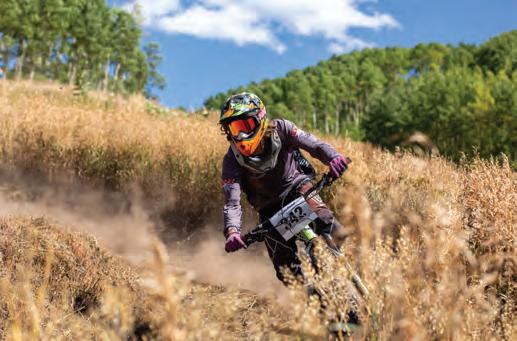

 Mason Schultz
Katie Lyons
Mason Schultz
Katie Lyons
BROTHERS Sean and Deven Bennett are celebrating their 11th year in business at the Powerstop — Gunnison’s own unique combination of gas station, convenience store, cafe, bar and now, arcade.




They are still happily providing the community with award winning food made with locally sourced ingredients.

This includes their fresh baked buns, from their own Luna Bakery, and beef from Gunnison cattle.



The Powerstop also gives back to our community. As Sean and Deven were both born and raised here, they know the importance of supporting the community.
The Bennetts have been actively donating to local organizations since their opening in 2009. This includes organizations and events like Western Colorado University athletics, Gunnison Schools sports and band programs, Cattlemen’s Days, Gunnison River Festival, Crested Butte Ski Patrol and Six Points.
They have officially opened a speakeasy arcade bar, affectionately titled Quarters and Cocktails. This arcade bar, located next door, provides Gunnison with a unique venue for gaming and is fun for all ages! Evenings every Wednesday, Friday and Saturday, Quarters and Cocktails is open late, serving up topnotch craft cocktails, providing a new alternative to the typical Gunnison bar scene. Bring a group of friends and challenge them to one of the many game offerings or enjoy your favorite sporting event.
Quarters and Cocktails also books private events.
Recently the Bennet brothers have been working on updates both inside and outside. Including new gas pumps.
A visit to Gunnison wouldn’t be complete without a stop by the Powerstop. The Bennett brothers’ unique concept from the last decade, along with their lovable team, has proved to be a cherished asset to the community.
“I just finished 10 songs in three days with Scotty Emerick and Billy Currington. I also spent a few days with Bubba Strait and Bryce Long. We recorded nine songs in about three days. When we get together it’s nose to the grindstone. I have an office in Key West, Florida. We hole up and write songs. There are no distractions. It still flows and feels natural, but after writing thousands of songs, good hooks are hard to come by. We will all throw out hooks and still rely on our little black books.”
Dillon advises aspiring songwriters: “Write about things you know about in the beginning. Create some mischief so you know what that feels like. Dream about things, expand your boundaries and write what you don’t know, but you think you do.
“Up until 1980 I sat in a gray small room all day and wrote songs around a table. I met [Hank] Cochran in 1980, and I would go to his house playing songs till four in the morning. He looked at me once and said, ‘You want to go to the Bahamas with me this morning?’
Well, hell yeah! I walked on a boat called "The Legend" and that’s where we spent the better part of four years writing great music. I get inspired by different places, like beaches and beach songs. A change of scenery will do a songwriter good.”
Summarizing trends in the business of music, “Streaming is about 90% of what we make,” he said. “Until recently, we had been operating on a 1909 copyright law formula for royalties. Music has changed drastically since that time. With the advent of the computer and piracy, my income dropped by three quarters, and the same for every other songwriter. Without a songwriter, you have no songs. As writers gain more notoriety, they are able to capture royalties from writing as well as publishing. I just sold part of my catalog a few years ago. It makes for a good retirement.”
Dillon shares that he enjoys living out in the country, riding four wheelers, seeing his grandkids and supporting his community in the Gunnison Valley. He has been instrumental in building breast cancer support and state of the art screening technologies through Tough Enough to Wear Pink.
“It’s rewarding to see the women’s lives changed because of what we’ve done, especially with the dense tissue machine,” Dillon said. “We envisioned having the best small town breast cancer center in the country — and we’ve achieved it. And it all started with robes and robe warmers for the patients.”
In 2017, Cole Classen produced a documentary on Dean Dillon titled “Tennessee Whiskey.” The film has inspired a full-length feature film which is in the making. n
(Bud Bush is the Principal at Bluebird Real Estate in the Gunnison Valley.)











You’ve seen that bumper sticker, “Not all who wander are lost.”
Cute, right?
Well, some who wander are lost. Me, for example. Quite regularly. And, to some extent at least, quite intentionally.
Yes, I like getting lost. Sometimes practically right out my back door. Other times deep in a far-away, unfamiliar wilderness environment.
There’s just something about stepping foot in a place on earth you have never trodden before, and not knowing exactly where the next step — or pedal — will take you. It’s equal parts thrill and excitement with a dose of fear tossed in to make sure you feel especially alive.
I’ve been traipsing all over the peaks and valleys of the Gunnison Basin for more than 30 years and love to be amazed at how easily I can find myself in unfamiliar spots. Even if the location is right next to a trail or a ridge that I’ve been on dozens of times, all it takes is the slightest of detours — “I’ve never noticed that two-track road before,” or “Is that a game trail or a trail-trail?” — and you’re
transported into the unknown.
Terra incognita. It’s a wonderful thing — that is, a thing full of wonder.
Granted, the situation can very easily turn south (metaphorically speaking; we’ll get into orienteering basics in a bit). This often occurs when you are with a hiking or biking partner who may not share the same penchant for gaining new perspectives.

Your wife, for example. Mine is a trooper, but I know if I get too far off leash Kirsten will not be happy, and the outlook for subsequent adventures will be dim. No one wants that, but sometimes the wandering can be legitimately accidental.
Take, for example, a simple hike we took a couple of summers ago. The location was nearby wilderness on a very popular trail and one that I’d been on more than a handful of times. Yup, and I still got us off course.
The mistake was honest and simple. It was a sucker trail, leading into and out of a backcountry campsite and I was the sucker. But by the time I’d realized the mistake, we were a good quarter mile or so up-valley and, needless to say, backtracking wasn’t an option. (I do reckon this backcountry stubbornness
has an urban cousin that is the equivalent of refusing to stop the car to ask for directions.)
See, I wasn’t really lost. Just off trail. And I had a feeling for where we needed to be. Trouble was, a very steep, very loose, very exposed hillside stood between us and the trail. And it was summertime in the Rockies, so of course the weather was threatening. Let’s face it, if you base your outdoor adventures on the weather forecast, you’ll never leave the couch.
Up we scrambled. Sometimes on all fours. Scree was sliding, thunder was rolling. But just when things were looking really grim, we crested a bench in the hillside and — voila! — there was the main trail. Right where I knew (okay, where I hoped) it would be.
And we reached it, and the protective forest canopy, just in time for the obligatory tenminute deluge of rain/snow/hail/graupel.
While we may not have made it as far up the trail as originally planned due to the detour, the day was invigorating and memorable. And the forest, after the squall rolled through and the sun reappeared, was simply magical.



 Some of us happen to love maps. Explorers have wondered what's over the next ridge for millenia.
Chris Dickey
Some of us happen to love maps. Explorers have wondered what's over the next ridge for millenia.
Chris Dickey
All’s well that ends well is a worthy motto in my book.
This thirst for the unknown is hardly unique. Explorers of all stripes have been wondering what’s over that next ridge for millennia. Yet, I realize most folks today prefer to embark on trips with the aid (or hinderance?) of technology. A reasonable person could ask, “Why don’t you carry a GPS or have a trails app?”
I don’t know. I guess the same reason I’ve never owned a watch. It’s not that I don’t want to know what time it is, it’s more that I don’t like to be confined to existing within its set parameters.
One of the reasons I go to the woods is to escape technology’s grip. That, and I think there is danger in solely trusting a dot on a screen to tell you where you are — at the exclusion of being able to lift your head up, survey your surroundings and get your bearings the old fashioned way.
I do not profess to be an orienteering expert, but I certainly try to maintain a general sense of cardinal direction and love to look at and study maps. I think these two basic skills are becoming extinct, based on the teenagers I’ve been around over the years. Speaking of lost.
Don’t get me wrong, I know search and rescue professionals have reams of stories about people who become hopelessly disoriented and disheartened. Not all of these incidents have happy endings. You don’t want to be that person.


But not only is knowing what to expect along every step of a trip — be it a quick afternoon hike in your backyard or a 10-day Himalayan trek — impossible, but trying to plan out every last minute, for me, takes some of the fun out of it.
There’s another bumper sticker slogan that suits me much better: “You can’t get lost on an adventure.”
And any day with an adventure, big or small, beats one without. n

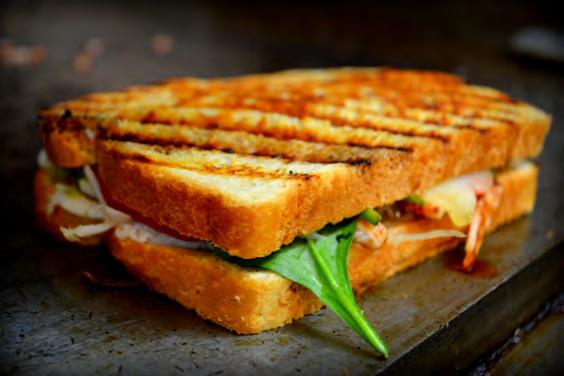


Another enterprising woman who has set up a catering business in the valley is Chef Meriska Koekemoer. She’s a Cordon Bleu trained chef from South Africa who established Protea: Imaginative Feasting. Since 2020, she has been sharing her love of the culinary arts in valley homes with visitors and residents. Whether it’s a date night for two, gathering with friends and family or a larger affair celebrating a milestone — cooking in a private home or a special location is personalized, fun and intimate.

Koekemoer says that she believes a “beautifully balanced crafted dish starts with the finest ingredients. What it requires then is care, patience and respect. I draw inspiration from travel, history, nature, memories and culture,” she says. “Food should nourish the body and soul. Nothing gives me greater pleasure than sharing that with my clients."

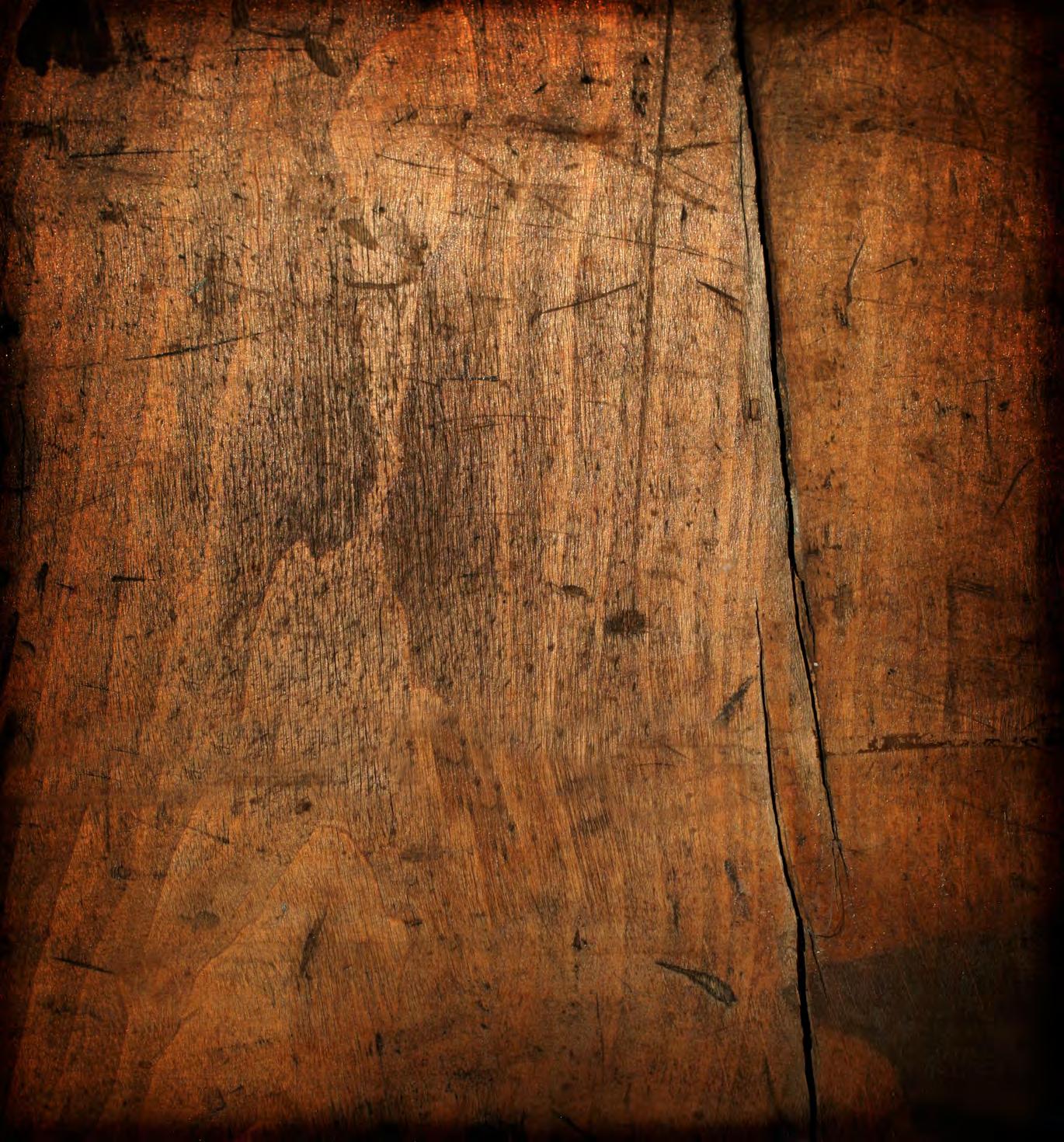

Her spring menu favorites include fresh oysters, beef tartare and asian shrimp. She offers poached lobster, crusted rack of lamb with carrot puree, truffle salt, apricot and watercress sauce and yummy sounding desserts like elderflower strawberries or Greek baklava with honey and thyme gelato.

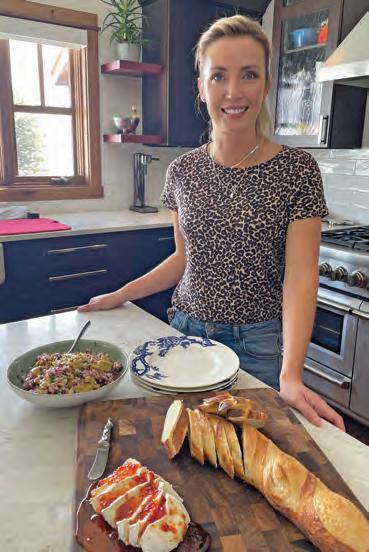
What makes Protea unique? Koekemoer sources artisanal products, heritage breed meat, wild seafood and organic seasonal produce. She prepares everything from scratch to provide a full sensory experience. Attention is paid to every detail for a cohesive atmosphere with an emphasis on sustainability and earth friendly sourcing. She is also happy to cater to a diverse spectrum of dietary needs: gluten free, vegan, paleo, keto or a mixture of these to customize the fare for guests’ and hosts’ needs. n
BY ENID HOLDENA fourth-generation Gunnison native provides the sweets via Crumb de la Crumb.
Shelby Rundell said she has not begun counting the weddings booked for this year, but last summer, she made pastries for 91 weddings.
“In the summer, it’s just complete mayhem,” she said. “I like [weddings] because they are all different and challenging.”
Rundell said becoming a pastry chef was “Plan Z.” Raised on a ranch, she was pas -

sionate about animals and participated in 4-H and the FFA. She got her bachelors and masters degree in agriculture. During grad school, she worked nights at a bakery. She fell in love with baking.
“Pastries are labor intensive. It’s more intricate,” she said. “It’s more of an art. It’s not something you can put in a pan and bake and you’re done. It’s hours, if not days, of progressive work that leads up to something simple, yet beautiful.”

Rundell has been to Italy, Spain and France. She entered the 2019 World Pastry Cup with a beautiful sugar sculpture. She said sugar and chocolate work is what fuels her soul and brings her the most joy, though baking croissants are a close second. Before the wedding boom, Rundell worked as the pastry chef at Garlic Mike’s in Gunnison. With encouragement from Mike Busse and his
wife, Traci, Rundell started baking for vari ous businesses including Corner Cupboard, Double Shot Cyclery, Wilder’s Organic Market and even Burnell’s.



“For me, agriculture will always be my first love. For me, as a local growing up in the valley who started in agricul ture, I wish more people understood the value of where their food comes from,” she said. “So many migrate from the cities, and are like, ‘Oh, milk comes from the gro cery store; meat comes in a package,’ and there’s no actual understanding or respect of
BY ANNA COBURNtrue grassroot businesses.”

Rundell hopes to eventually be certified from the American Culinary Federation. A challenge she faces is altitude — having to adjust almost everything in her pastry art to


A well-groomed and hardworking local finds affordable housing in a tree.
 Marilyn Rodman
Marilyn Rodman
Brutus is a 7-year-old mini doodle who loves living on Fairway Lane and chasing the birds outside! Extra points if he can chew on a bully stick out there.
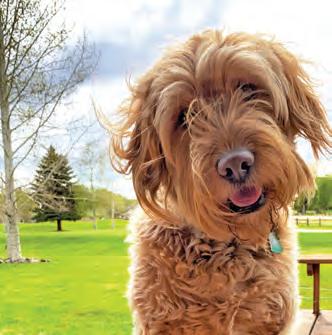

Sienna Rose and Alejandra Plata enjoying a sunny day on their porch in Gunnison with their Buff Orpington, Dora.


taught art. McAfee later wrote about her art teacher, Catherine Richter, as someone “who guided and encouraged me in school and in years since.”
Acclaimed national artist Ila McAfee was born in the mountains outside of Gunnison near the old sawmill site not far from Carbon Creek in 1897. She grew up in nature, spending much of her childhood on a ranch along the Cochetopa Creek. As a result she developed a strong connection to animals and the changing moods of the landscape. As a child, she sketched a great deal and painted with watercolors — and horses were her favorite subject.
She graduated high school in Gunnison in 1916 and took off alone to Los Angeles to begin her art studies — very daring for a ranch gal in those days. After a spell she returned to Gunnison and studied at Western Colorado University, then known as Colorado State Normal School, from 1918 to 1919, under the Richer’s, an extremely accomplished husband and wife team of artists who
In later years Catherine Richter moved to Mexico studying watercolors, lithography and Mexican history. McAfee, who then lived in Taos, stayed friends with Richter, and both documented their lives with notebooks filled with descriptions, paintings and sketches. McAfee published a book of drawings, paintings, poetry and even a song about Gunnison set to music. In the book there are poems about animals, nature, Gunnison and Gothic. In it she quipped, “If you don’t like the poems, look at the pictures.”
After graduating from the Normal School, McAfee spent five years studying in Chicago, followed by two years in Manhattan, where she illustrated books and magazines, especially anything to do with her favorite subject – animals. She met her husband, Elmer Page Turner, as a fellow art student in Chicago. They married in 1926 and moved to Taos
where they established an art studio and became prominent members of the Taos art colony. McAfee continued her work as a painter, became very successful documenting life in Taos, and her creations grace museums, private collections and library walls. She was known as a delightful eccentric and even taught her Siamese cats to perform tricks.
She became nationally famous for her depictions of horses, and her drawings can be found in textiles, ceramics and even “How to Draw Horses” books. She also loved to paint scenes of Native American life in the pueblos.
In 1940, McAfee was commissioned by the Federal Fine Arts Project to paint the mural entitled “Wealth of the West” that remains in the Gunnison Post Office today. The mural depicts a scene from Gunnison’s historical past filled with cattle, cow herders, pack donkeys, deer, snowy mountains, trees and a waterfall draining into a river. Her expertise in drawing both domestic and wild animals is evident in this work, as well as the ambitious scale and composition.

She published a poem about the mural, which is excerpted below: “What is this wealth of our Rocky Mountain West?



Is it the cattle that range far and wide, Or the saddle horses we like to ride? Is it the wildlife one sometimes sees, Or the cool and fragrant mountain breeze, The trout in clear lakes and racing streams Where we can dream our treasured dreams?
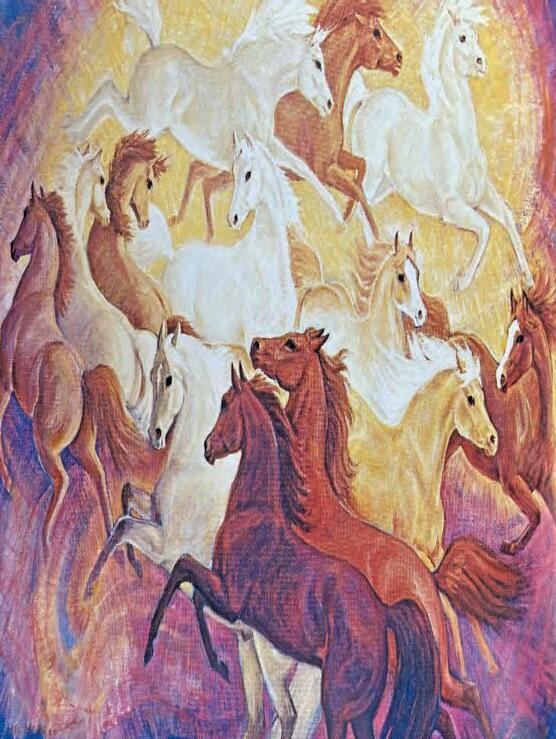
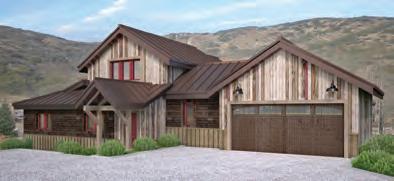
Is it the autumn colors and spring’s wildflowers, Places of quiet for restful hours …”
In an interesting continuity for this valley, one of McAfee’s descendants, Candace Nadon, who knew and loved her, is also a published author and currently teaches at Western Colorado University in the graduate program in Creative Writing.

McAfee’s
this magazine. n
Jagged peaks pierce deep blue skies while wildlife teams in rocky canyons and on high valley floors. Crystalline rivers flow from altitude while unique geology promises adventure and spurs endless exploration. From climbers, fishermen, hunters, 4-wheel enthusiasts and hikers to bikers, horseback riders, birdwatchers, and Old West history buffs, magical moments are spun into heirloom memories passed on and recreated generation after generation.
Each spring, late snows melt and the mountains explode with life. One day, the cloak of winter is tied tightly, while, what seems like the very next moment, rivers rush, trees and shrubs green up and the varied species of high country inhabitants emerge to enjoy this treasure-laden land. With backcountry roads and trails just opening and becoming passable to foot, hoof and tire traffic and streams and lakes abandoning their icy shells, springtime is the perfect time to visit Lake City and experience the pristine solitude and beauty of its high country places.

Each summer in Lake City, wildflowers color every view, daylight

adventures continue into the late evening, night skies shine with stars and fun times are had all around town. With so many dreamcome-true possibilities, Lake City summers have something for everyone.
With things to do and sights to see filling every summer month, happy energy is contagious in town, on backcountry roads and trails, on summits, at tranquil lakes and at campfires under the stars. Despite the presence of more people than at other times, everyone can find their special moments and places amidst the vastness of the San Juan Mountains. n
Craig Palmer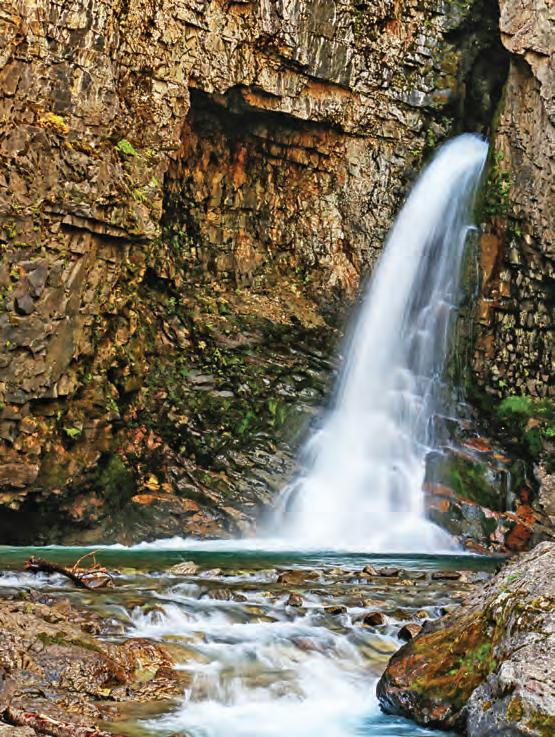


























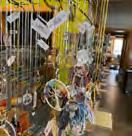

LISTEN TO OUR EPISODES HERE. NOW STREAMING ON SPOTIFY, IHEART RADIO, APPLE PODCASTS AND GOOGLE PODCASTS.












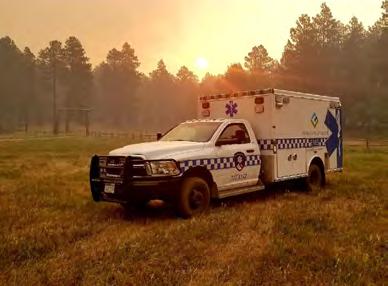


“I would describe myself as a colorist, kind of a contemporary expressionist,” Bren Corn, one of the Valley’s most successful and prolific artists, said. “I can paint anything,” she added, “which is good because I get bored easily. Right now I’m working on horses, but after five, maybe six paintings, I have to move on. I also work on several projects at a time, small-scale, large-scale, you name it.”
Corn has developed a distinctive style, loaded with colors, abstracted textures and graphic elements often visible as black lines. Usually, there are recognisable elements in her paintings, but they have been abstracted out of life and rearranged by the artist to suit her fancy.
In addition to being versatile with her subject matter, she works in many different mediums: acrylic, oils, oil pastel, charcoal, ink, watercolor and colored pencil.

“It’s endless …” she says. At one time she even did kids' black and white photography and darkroom work.
Corn started her journey as a business major in a community college in Arizona, before moving to Gunnison and signing up for courses in the art department at Western Colorado University. She attended classes in drawing, photography, print-making and

jewelry. She also studied painting and history of art after a friend strongly encouraged her to paint. She remains glad of her business background, though.
“As an artist, you have to do both. You have to stay relevant and adapt to the situations that come into your life,” she said. “Things come up so suddenly that you have to be strong and flexible. As a working artist, you must keep investing in yourself and promoting your work, but many artists end up spending more than they make. Don’t do that.
“You have to keep shaping your artistic output, adapting to the world around you which is changing,” she advised.








Corn recently expanded her imagery into puzzles. This was a big investment, but she feels it will pay off. She has permanent spots to show her paintings at the Paragon Gallery in Crested Butte, the Gunnison Art Center and, until recently, when it closed, in the Evergreen Gallery. She also has shown nationally and accepts commissions from locals and out of towners. Some of her clients trust her so much, they give her carte blanche to do her thing. As a last piece of advice to the creative community, Corn says, “Remember to be kind. No one can do everything by themselves.”
Stop by her studio on the first floor on the corner of Main and Tomichi Streets, Gunnison. Doors are between Corner Cupboard and Monkey Goats. n




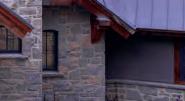


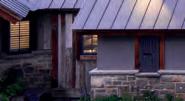







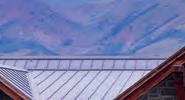











 BY MIKE KING
BY MIKE KING

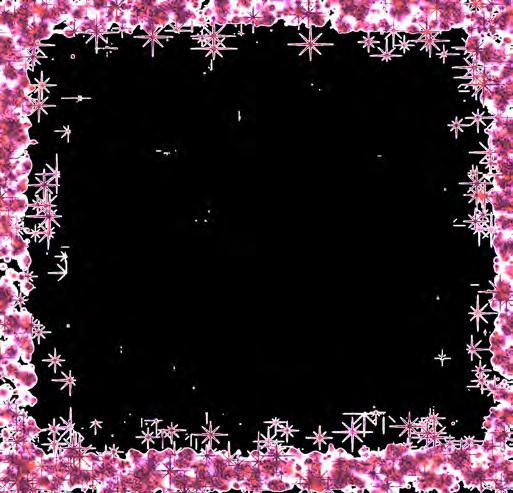



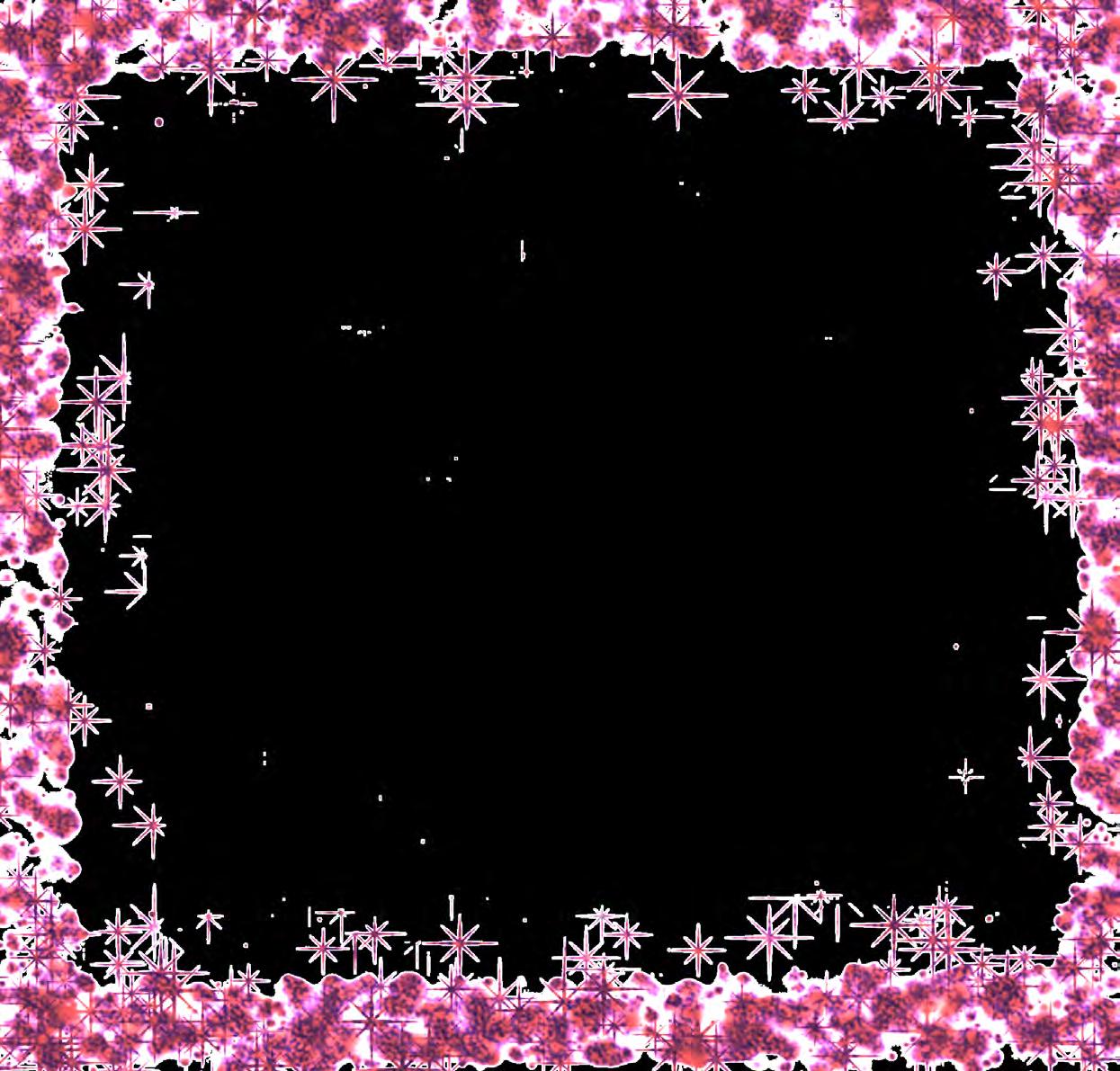
Jessica Foutch embodies the Gunnison County ideal — living and thriving in the vast open spaces that surround home. She lives and works among us, pursuing her love of the outdoors, hiking and exploring with a pick and shovel. Foutch's passion is for rocks and minerals, gemstones in particular.

"I love to dig aquamarine," she said. This mineral, a pale-blue to light-green variety of beryl, is found at North America's highest elevations, like the peaks in and surrounding Gunnison county. Aquamarine is also Colora-

ning strike at 13,500 feet," said Foutch. She prospects on many high mountain ranges, including peaks in Gunnison and Chaffee Counties. "Different mountains have differ ent deposits," she said. "Aquamarine. Topaz. Quartz. I dig a variety of gemstones from all over Colorado, Arizona, New Mexico and Utah. I'm not going to live long enough to dig every site that I want to explore."
Foutch's long brown hair was pulled back in an easy ponytail as she sipped coffee dur ing our hour-long conversation. Her dark eyes reflected her concentration as she spoke. After 16 years in the field, Foutch knows what she's talking about, and she does so with clarity and confidence. "There's definitely not a lot of women who are digging or prospecting," Foutch said. "It took me a while to get a foothold and gain the respect of my peers. Now, I'm known for the material I pull out."
“Even with years of experience,” Foutch said. "You never know what you’re going to find. It's part of the gamble, why it’s so fun. I found Topaz in Arizona," she smiled and raised her eyebrows, "which is very uncommon."
Foutch glances off as if gazing at some enticing feature of exposed rock.
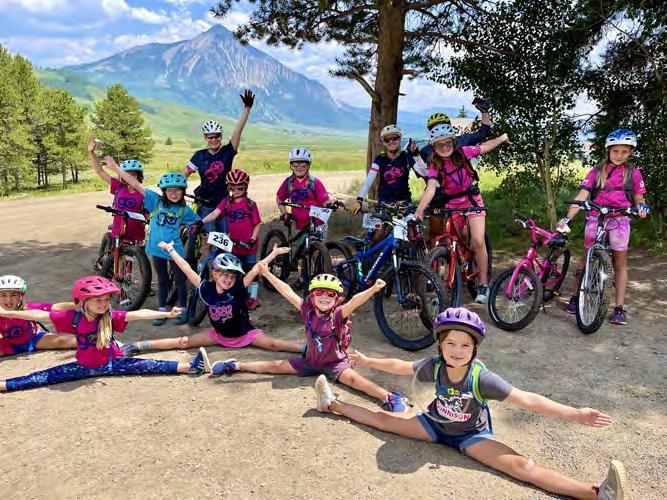
"Some people collect minerals from a certain state or a certain mountain range. Half the reason that I do it, I get to be out in the middle of nowhere with the pikas and the marmots. Honestly, animals want nothing to do with you. I have more confrontations with agitated humans than I do with agitated animals."

Most of these encounters, Foutch explained, involve "confronting somebody who's digging on your claim."
There is a reason folks might be poking around known sites. Multiple markets exist for the mined material. Foutch sells at the Tucson Gem Show in February and at spring continued on 60

Jessica Foutch
continued from 59
and fall shows in Denver. There are also rock shops buying wholesale, as well as private parties. In fact, prospecting gemstones provides Foutch a truly quality existence. While the "exact earnings fluctuate from year to year," Foutch explained, lode claim mining and other explorations generate enough to "pursue my passion and continue living my life in Gunnison."
About searching for new places to ply her craft, Foutch said, "I am looking for evidence that has already eroded out of the ground." On most of her claims, she said, "I own the mineral rights, I lease the land. When my claims are lode claims, it’s all hand digging. But you don't have to have a claim to dig in national forest."
By definition, hand digging is any nonmechanized excavation, including picks, shovels and manual post-hole diggers. According to the Bureau of Land Management, "lode claims cover classic veins or lodes having well-defined boundaries and also include other rock in-place bearing valuable mineral deposits. Examples include quartz or other veins bearing gold or other metallic mineral deposits . . . and copper-bearing granites." In
other words, the types of minerals that Foutch and her partner, Troy Hamilton, like to find.

There are many opportunities for mining on public lands. The surface is owned by the government and potentially leased to the public, but the minerals are public domain. The BLM website states that people may "prospect and locate claims and sites on public and NFS land open to mineral entry."
Digging for gemstones is completely in line with Colorado's prodigious mining history. From Indigenous people mining quarries of turquoise to the gold and silver rushes of the 19th century, through the discovery and mining of uranium and molybdenum in the early 20th century, Coloradans have long been extracting material wealth from the ground.
However, Foutch offered advice for those who might consider the prospector's way of life. "This industry has been romanticized. There's a lot of manual labor. It's not as easy as projected on reality TV. Don't get discouraged when you don't find anything," Foutch said. "Half of it is enjoying it for the hike."
Foutch's digging partner and peer, Hamilton, has prospected for 30 years. He suggests that the rookie prospector should, "start with a Colorado rockhounding book and be patient, because it’s not easy. It took me
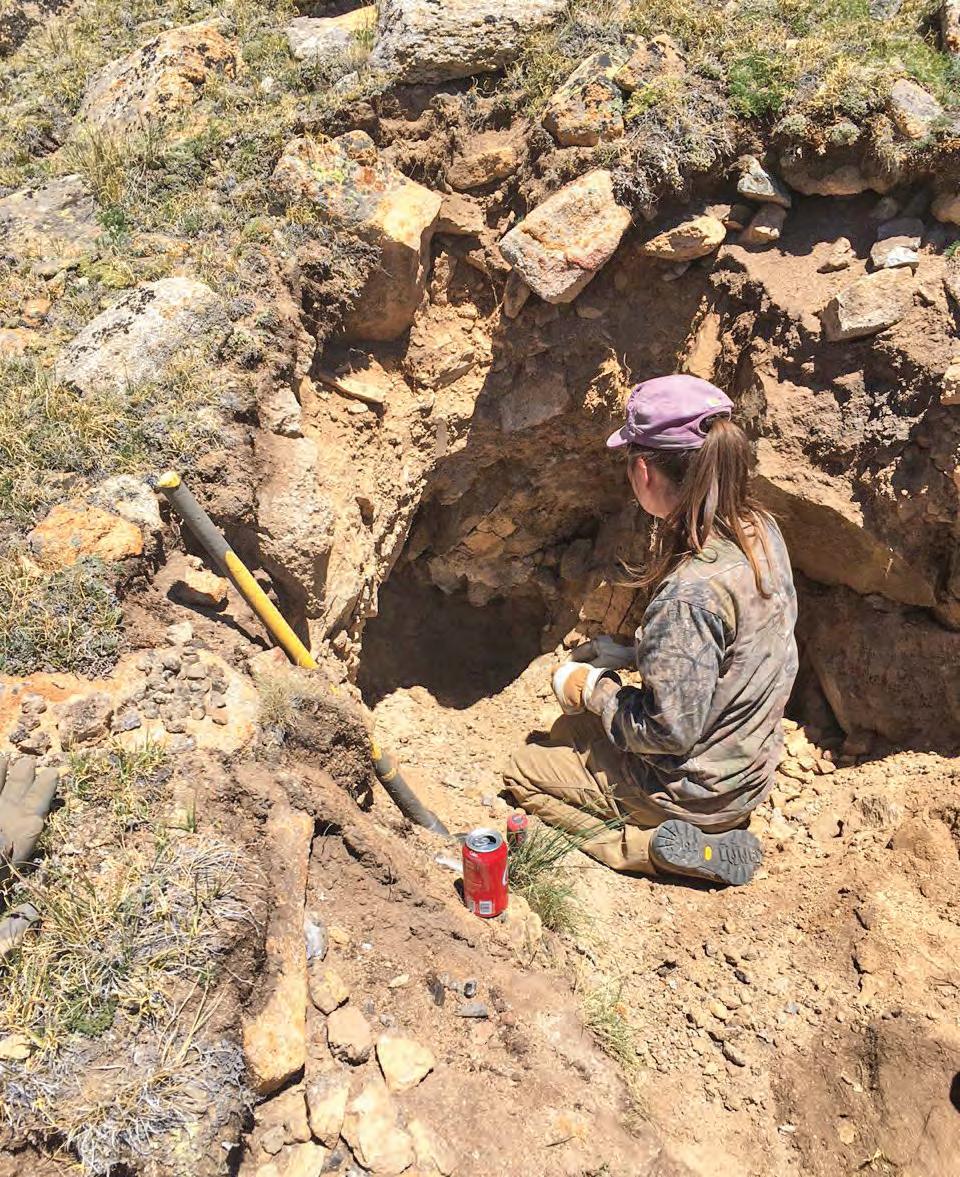
almost 10 years to figure out localities and learn about the rock formations and what to look for.
"If you love it, you will eventually learn to find amazing things," Hamilton said. "My favorite part is being free and seeing nature and wildlife, really connecting with the earth. And, of course, when you find something, knowing no one has ever seen it before."
Hamilton recalled two really noteworthy finds from his time prospecting. "Finding one of Colorado's best ever topaz crystals. Probably the most valuable thing I ever found. And finding a gigantic pocket of citrine," he added.
"I like all of it," Hamilton said, "all of the variety of quartz. Amethyst is the purple variety. Citrine is the yellow variety. Quartz can also be in combination with other minerals."
Discoveries like these don't come by accident. "Me and Jess definitely know our stuff with crystals. We pick up every day of our lives to keep it going. We love doing it, too," Hamilton said. n
(Mike King is a Gunnison writer, professor and artist.)





 BY DAVID PRIMUS
BY DAVID PRIMUS
“Beneath Blue Mesa” is the story of the people, resorts and ranches displaced by the reservoir. This 23-mile stretch of the Gunnison River included three small towns, 14 fishing resorts and hotels and many ranches, providing a livelihood for hundreds of people.
The book includes a tour with driving directions. To see the location of the Rippling River Ranch, drive west from Gunnison through the canyon. A half mile past the turn to Lake City (Hwy. 149), turn left into a small pull-out at Hwy. 50, mile-marker 147.5. The Rippling River Ranch was just below the highway next to the river.
Richard Steckel, a maître de at the University Club in Chicago, had a vision of an upscale fishing camp in the mountains. In 1947, he and his family moved west and purchased the Rippling River Ranch from the Eden family. Steckel was famous for his family-style ranch meals and asking his guests to dress for dinner.

EDEN'S RESORT, 1930.
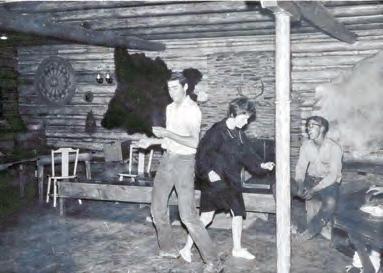
Rippling River offered it all: fishing, hunting, moonlight hayrides, ghost town tours, shooting, shuffleboard, badminton, croquet, horseshoes and ping-pong. Guests could ride horses, burros, Shetland ponies and take an overnight camping trip to the Thunderbird Ranch, 20 miles to the south. The following photographs are a good representation of a typical ranch/resort.
Above:








Left: Toddler on a horse, 1962. Note the cable across the river to guide a boat. Many resorts used this method to ferry customers across the river.


 Courtesy Duane Vandenbusche
Boy taking a burro ride, 1961.
Courtesy Susie Steckel
Dancing in the Recreation Hall, 1962.
Courtesy Duane Vandenbusche
Boy taking a burro ride, 1961.
Courtesy Susie Steckel
Dancing in the Recreation Hall, 1962.







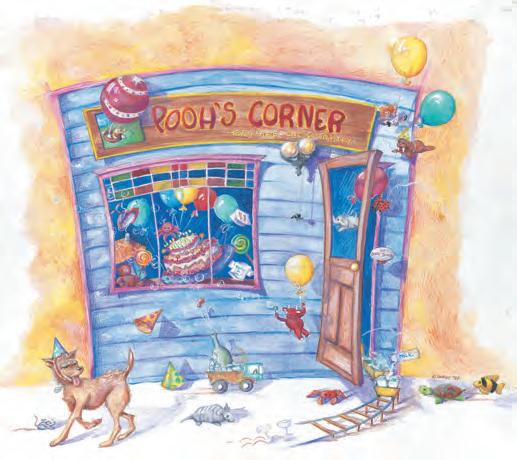
 'Papa' Steckel entertaining dinner guests, c. 1960.
Courtesy Susie Steckel
Pack trip to Rainbow Lake, c. 1960.
Dodge Powerwagon transport to the Thunderbird Ranch, c. 1960.
'Papa' Steckel entertaining dinner guests, c. 1960.
Courtesy Susie Steckel
Pack trip to Rainbow Lake, c. 1960.
Dodge Powerwagon transport to the Thunderbird Ranch, c. 1960.



No one understands the Crested Butte lifestyle better than we do. Our hand-picked brokers have helped our clients buy and sell more properties than any other real estate company in the valley. Nothing compares.


 Susie Steckel taking guests on a horse-ride, 1962.
Courtesy Susie Steckel.
Susie Steckel taking guests on a horse-ride, 1962.
Courtesy Susie Steckel.
Rates in 1958 for lodging and three meals a day were $11.50 per day or $77.50 per week. Trail rides were $1.50 per hour; sightseeing trips, child-care and many other activities were included at no charge.
Similar to other resorts, the guest cabins and buildings were all named: Main Lodge, Dining Cabin, Bluebird, Duck Inn, Private Lodge, Recreation Barn, Little Grey Home, Riverside Cabin and Aristocrat Cabin. Up to 60 guests could be housed at a time.
Susie Steckel, Richard's daughter-inlaw, recalls many well-known people who stayed at the Rippling River: Lee Knous, Governor of Colorado, the Ambassadors to Poland and Egypt and the Conductor of the Denver Symphony, to name a few. One summer a group of executives from the Kuner Canning Company in Denver came and were soon drinking and chasing the help. Denny, Richard's son, settled them down by saying, "I just called and your wives are on the way."
One day when Denny was about ten, he was riding his horse across the Ten-mile Bridge (near today's Hwy 149 bridge to Lake City). Bob Hope, staying downstream at the Moncrief River Ranch, floated below and called up to him, "I want to ride your horse." Denny said, "No." Hope said, "I am Bob Hope." Denny replied, "I don't care who you are, you are not riding my horse." And he didn't.
Rippling River_PrivateLodge-DuckInnBluebird-MainLodge_Susie_Steckel_044. jpg


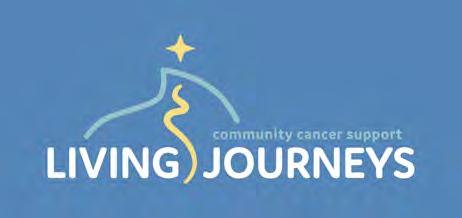






Rippling River Ranch, c. 1955. L to R: Private Lodge, Duck Inn, Bluebird, Main Lodge. Courtesy Susie Steckel.
When the reservoir was constructed, many of the buildings were sold to the highest bidder and moved. One of these was the Main Lodge, now a private home located on north 8th Street in Gunnison. If the buildings didn't sell, they were burned.
Susie Steckel, the contributor of these stories and photos, was 15 when her father's friend told him a resort near Gunnison needed summer help.
She remembers, "My father had three girls, so … my mother said, 'Susie, pack your bags.' It was my first time away from home and I was scared. The first day, I met Richard's son Dick, 25. I was afraid of this big tough man — he could handle animals so swiftly and effectively. One day, I needed help starting the washer. Dick said, 'Well sure, hon!' and I was hooked. We dated often, and he proposed up Steuben Creek the next summer. Two years later, in 1960, we were married."
Thanks to Susie, for these great stories and photos. n



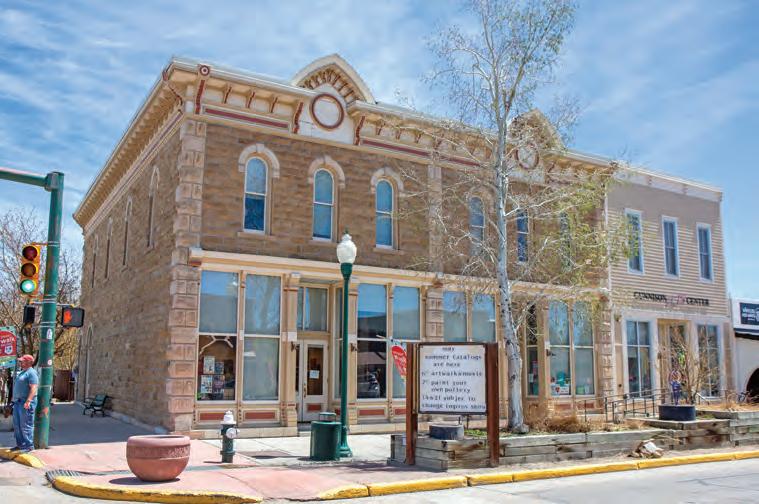
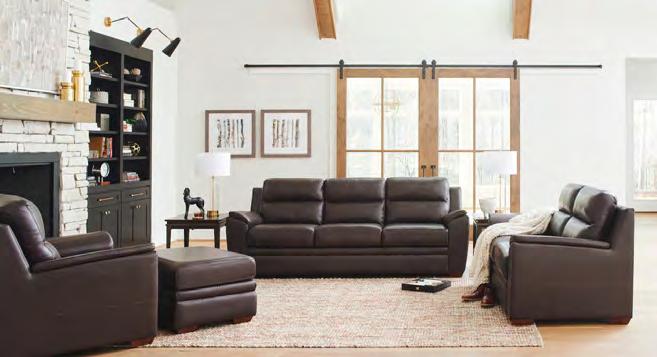






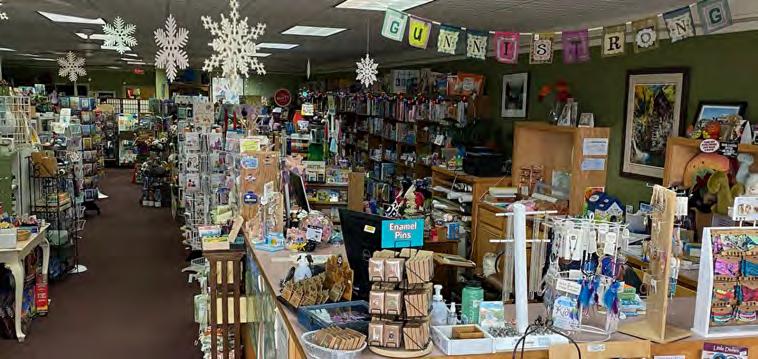
beautiful two-story, blocked sandstone building that is home to the Gunnison Arts Center (GAC) sits at the intersection of Tomichi and Main Street. It is one of the finest architectural examples in Gunnison from the era of permanence that developed out of the fledgling gold-rush community that started here in 1880. The building was built by stonemason Fred Zugelder and his brother Frank Zugelder in 1882. Fred was the quarry master at the Aberdeen Granite Quarry west of town, from which the stone for the state capital was also quarried and transported by rail to Denver.
Carlie Kenton, executive director at GAC, explained how the building and a few other cut-sandstone buildings throughout the city represent the community's transition from mining supply camp to permanent settlement. The Zugelder brothers were highly prominent builders in the area and responsible for many stone structures, leaving

their distinct signatures in the quoin, sill and lintel carvings. Built with characteristics of what is considered an Italianate style, the GAC building incorporates both local materials, particularly wood and the locally quarried stone, as well as architectural embellishments brought in by the new railroad.
The handsome Main Street facade features rectangular storefront windows separated by vertical, milled-wood columns, arched second-story windows, two ornate arched false pediments that extend above the cornice and the signature carved quoins, lintels and sills. The flat roof has walls extending above the roofline to form a parapet crowned with an elaborate wood cornice.

Over its 139-year lifespan, the building
has seen many different kinds of owners and activities which changed both the exterior facade and the downstairs interior quite drastically. The building was originally owned by Mary Mechling, for whom the building was first named. The first floor of the Mechling building was the downtown freight office which processed rail shipments from the Denver and Rio Grande Railway. The second floor served as fancy private rented rooms
for the European Hotel. In 1888, Mechling sold the building to the Gunnison Hardware Company. It remained a hardware store for years under a few different owners who eventually altered the window designs, installed a door on the north side of the building and transformed the layout and design on the lower floor.
At some time, the upstairs of the building was used as a bordello, accessed by the added door and stairs on the north side. Although there are rumors that there was a tunnel underneath the building, this is not true, Kenton assured me.
“The basement was hand dug in the 1940s for heating and storage,” she said. However, a sagging counter in a small office, where the madam would admit customers and accept tokens for services, was still in evidence when the Klinker’s bought the building in 1971. That space was cleaned up and is currently an

arts cleanup area. After Leo and Judy Klinker purchased the building, they polished it up and changed it from a hardware store to their Klinkerhaus Ski and Sports store.


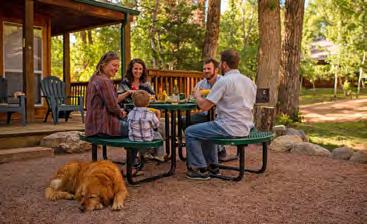
During the Klinker’s ownership, they installed a large wrap-around wood awning and window shutters on the north and west sides of the building and added the west side entrances and storefront windows, as well as a spiral staircase inside to access the upstairs offices to the north.
But in 1988, the building fell into bank receivership. This turned into an opportunity for the arts community. A year later, the Gunnison Council for the Arts entered into a lease-to-purchase option agreement with the First National Bank of Gunnison. After a fundraising campaign in 1992, the council was able to purchase the building outright, and the GAC was established. The building was listed on the Colorado State Historic Register as Gunnison Hardware in 1993 after the GAC restored the original construction of the north facade with Colorado State Historic funding. During the 1990s, the council received further grants from the Colorado State Historical Fund. These grants allowed the arts center to remove the awnings and restore the west and north facades to their original appearance, helping preserve the building’s historic integrity as well as allowing it to continue to qualify for the state historic register.

The building is rumored to have many lingering shadows and ghosts from its varied former days. It was the subject of an investigation by Mark Todd and Kym O’Connell Todd, as research for their book, “Wild West Ghosts” which yielded many amusing anecdotes, disembodied voices and a few shivers. continued on 71

The building is rumored to have many lingering shadows and ghosts from its varied former days. It was the subject of an investigation by Mark Todd and Kym O’Connell Todd, as research for their book, “Wild West Ghosts”.

 South Main Street in Gunnison in the 1880s.
South Main Street in Gunnison in the 1880s.
At present, in addition to the alleged historic presences, the building houses a black-box theater, bar, galleries, music room, visual arts classrooms, clay studio, dance studio, offices and a multipurpose meeting room. An outdoor courtyard for summer events has a performance platform, seating area and gardens. It is a vibrant and versatile center that offers classes and events in the arts for all demographics. Attracting visitors to the historic building through their varied programming establishes the building as an essential part of the fabric of downtown Gunnison.
In recent years the exterior has been restored and further preserved by the arts center with additional funding from the state. The mortar was repointed, the trim repaired and painted and asbestos removed from the ceilings. An unanticipated surprise came when some stucco facing onto the courtyard was removed and two original doors and a window were uncovered, which have also since been incorporated.
The current interior preservation work will finalize the plan set in motion three years ago to upgrade the building. Restoring the historic ceilings, walls and interior windows further preserves the historic character of the space while ensuring its structural integrity. Other projects in the pipeline are the creation of a teaching kitchen, a gallery and theater swap which will create a more flexible event space with collapsible walls and a digital arts maker space which will provide the tools for practicing artists to become professionals, making art their career.
The Framing Our Future revitalization and renovation project is a current strategic effort by the GAC that allows the organization to expand and enhance its arts programming, create better event spaces and welcome more participants as well as upgrade outdated infrastructure. They aim to improve energy efficiency at the same time as they celebrate the artistic and historic character of the community. Combining a buzz of new happenings with the preservation of an iconic historic building is an effort that the GAC is fully committed to.
“Gunnison needs a unique, compelling and vibrant downtown to capture the attention of people commuting, visiting and living in the area,” Kenton said. “As the gateway to downtown, it’s vital that the GAC’s building and organization are thriving. By improving our community’s image through the presence of the arts and a captivating building, people feel more confident about investing in our community. An exciting and vibrant community cultural center allows locals and visitors to come together to have fun, participate in the arts and bring activity to our downtown businesses.” n


As part of an initiative to upgrade the downtown, a new mural is scheduled for the revamped IOOF park to replace the current image. The existing landscape mural was created sometime in the mid1990s, and before that there was a wooden wall that showcased the area’s ranches.
After receiving public input, a selection committee chose Amie Jacobsen to paint a new mural and build sculptures. The Tourism and Prosperity Project (TAPP), the local organization funding the $67,000 proj-

ect, launched a survey in late February to help choose the winning design and received over 750 responses from community members. The committee — consisting of members from the TAPP, the City of Gunnison, the Gunnison Arts Center, the Gunnison Country Chamber Commerce and the building’s owners — made a final decision in March, but took some additional time to work through the timeline. Work on the mural will begin at the end of May, with completion set for the end of June. The sculptural elements of the

project will be installed in September.
Jacobsen received a painting degree from then Western State College in 1997 and has spent over 40 years visiting the Gunnison Valley. She has created art pieces across the West, installing sculptures in California, Oklahoma, Idaho and Colorado. Her work includes the “Spring of Crested Butte,” a giant dragonfly outside of the Crested Butte Center for the Arts. A fresh coat of paint will cover the faded mountain scene on the south-facing wall of the Twisted Fork building, visible
Enid Holden The old mural. The new mural.from Main Street. Jacobsen’s mural design highlights the valley’s outdoor recreationalists, as well as native wildlife, plants and insects. Certain aspects of the mural will be sculptural, allowing plants and animals to pop off of the wall.
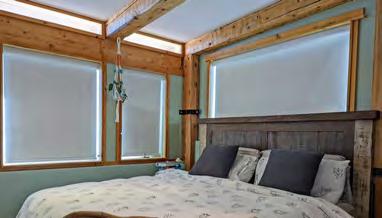




Andrew Sandstrom, marketing director for TAPP, said that one thing the committee really liked about Jacobsen’s proposal was that it was “more than just the mural. One big piece of it is going to be big metal sculptures that are throughout the park as well,” he said. “It is a multimedia project that incorporates a whole park and not just the wall.”
Because of the size of the wall and the timeline, Jacobsen will be working in collaboration with Denver-based muralist, Will Barker, whose work has a compatible style. “He's going to come in and start prepping the wall before I even get there. And because he's got a lot of mural experience, he expects it to be about a two week process to paint the actual mural,” she said.

For both her mural and sculpture designs, Jacobsen said she wanted to showcase what she loved best about the Gunnison Valley. “For me, it's the rugged terrain, the green summer valley, the high mountain peaks and the plants and animals that I have learned to spot and identify. “That is what makes hiking, biking, climbing, hunting, skiing, snowshoeing, horseback riding, camping and fishing so wonderful in Gunnison and Crested Butte. I am excited and honored to have the opportunity to contribute to the culture and community of a place that means so much to me.” n


 Mural artist, Amie Jacobsen.
Mural artist, Amie Jacobsen.

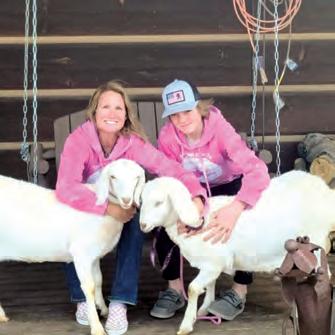




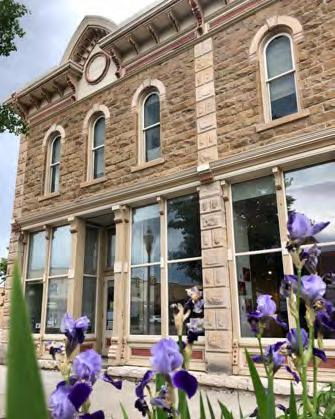




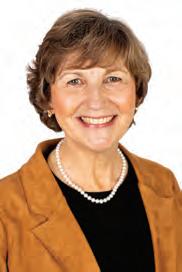




Documented history of farming and agriculture in the Gunnison Valley is sparse. Historical records of crop production available to us are etched as tally marks on the walls of pole barns, marking the poundage of potatoes harvested in 1923 or the number of calves born the following spring. Beyond sheep and cattle ranching, Gunnison Valley’s food production may currently be in its prime.
In the 1880s, commercial farming was largely a service for mining camps and settlements of white Europeans which developed with the mining industry. With an average of less than 11 inches of rain and fewer than 65 frost-free days per year, Gunnison doesn’t boast the easiest growing conditions. By the year 1900, ranching overtook the mining industry. Through trial and error, ranching families grew backyard gardens to feed themselves. They soon found potatoes and hay to be the most reliable crops.
In the 1970s, recreation was increasing in popularity and the region gained value in the growing tourism economy, soon surpassing the value of ranching and mining. People like Jan Scheefer moved to the area in the early 1970’s to attend what was then Western State College and stayed to build lives in the Rocky Mountains.



Scheefer was told, “Oh, you can’t grow a garden here,” but she hauled some composted cow manure from a ranch, scraped it into the dirt and grew a season’s worth of salad. She still remembers her neighbors’ disbelieving smiles.
She moved from Gunnison to Ohio City where she and her partner bought a quarter acre and started experimenting with yearround food production by way of grow pits — sunken greenhouses dug into the earth. Even when the winter nights dropped to 30 below zero, by covering the pits with carpet scraps the hardy greens thrived. In the summer months, tomatoes, strawberries, peas and beans produced enough to feed the neighborhood.
“Self sufficiency became a lifestyle,” Scheefer says. She moved back to Gunnison with her family in the early 1990s and contin-
ues to live as self-sufficiently as she can.
Speak with any farmer or gardener in the Gunnison Valley, and they’ll mention the importance of season extension. The short growing season means that most seedlings must be started indoors to be given a chance to flower and fruit. Outdoor gardens don’t get the consistent warm temperatures required to grow most peppers and squash and even tomatoes prefer warmer weather. These crops can thrive inside of greenhouses and high tunnels, which are common among backyard gardeners.
Susan Wyman, owner of Gunnison Gardens, relies on three high tunnel hoop houses to grow her crops. “Brassicas like cabbage, kohlrabi, and broccoli do great out in the fields,” said Wyman, “along with carrots, radishes, and several varieties of greens. The squash and cucumbers like it hot, so the high tunnels are the place for them.”
Wyman and her team also grow winter squash, green beans and other warm season vegetables on her urban farm, which began in 2015. Gunnison Gardens also grows raspberries, honeyberries and sour cherries, which all do well in the cold climate. They started with 10 cold-hardy apple trees and the orchard has gradually grown to include 50 plum and apple trees.
Agriculture in and around Gunnison is being adopted by a new generation of farmers. Matt Ozyp purchased 133 acres in 2017 and created Iola Valley Farm when he was 26. Matt has several tomato varieties that he
 Susan Wyman.
Susan Wyman.
grows in his 15-foot high tunnel hoop houses. He grows a variety of vegetables while incorporating chickens, sheep and cows. Matt believes that animals and plants are both necessary to create harmony in organic farming.

He and his partner, Alexis Taylor, operated a Community Supported Agriculture (CSA) for two seasons and are excited to be collaborating with Gunnison Gardens this year to bring more variety to their shareholders. Taylor made another pivot this year, launching Sundrop Flora, the first flower farm in the Gunnison Valley. Sundrop Flora focuses on edible and medicinal flowers as well as freshcut flower bouquets, available for purchase at local farmers’ markets and through CSA subscriptions.
When Holly Conn moved to Crested Butte with her family, her interest in vegetable gardening also met with skepticism. Conn is motivated by a challenge so she set to work with fellow community members to build a shared garden in a lot on Elk Avenue. The small plot produced gorgeous vegetables and led to an organization focused on bolstering local food production and backyard gardening.
Ten years later, Mountain Roots Food Project manages eight growing spaces including school gardens at both Crested Butte and Gunnison Community Schools and two small production farms that grow vegetables for a CSA.



Mountain Roots does more than grow organic vegetables at 8,000 feet elevation. Their Farm to School education program teaches kids the importance of nourishing their bodies and minds with healthy food that is grown locally. Their programming connects produce grown all over Western Colorado with chefs and restaurants, food banks and families to minimize the environmental impact of the food we eat and maximize the economic viability of small-scale local farming.
Together with Gunnison Gardens, Iola Valley Farm, Sundrop Flora and other players in the local food movement, the Gunnison Valley Producers’ Guild works together to build the market for local food, share knowledge and support each other in learning and applying the best organic, high altitude growing practices. The same pioneering qualities that brought Europeans to the valley 150 years ago are alive and well in the entrepreneurs and visionaries that are making local food in Gunnison Country what it is today.
(Rachel Branham is development director for Mountain Roots Food Project, a non-profit devoted to food education, resilience and security in the Gunnison Valley. For more information visit mountainrootsfoodproject.org.)n
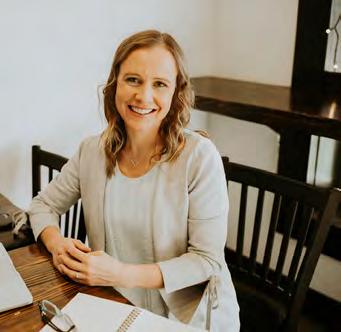
Gunnison boasts a number of murals, some historic and others more contemporary in nature, scattered around the town. A fun afternoon adventure could be spent visiting them all.
Two of the most historic and classical in nature are to be found on the main floor of the Leslie J. Savage Library on the Western Colorado University campus. They were painted by Henry Leopold Richter, an art professor at Western from 1911-1919.
Richter (1870-1960) was born in Austria and immigrated to the U.S. with his family in 1888. In addition to studying art at the Chicago Art Institute, he went to night school to learn English, his seventh language. In 1911, he was offered a teaching position at Western (then, Colorado State Normal School). Richter loved to paint, and did so when he was not teaching German, art or violin.
The murals were not originally in the library, but were located in Taylor Hall, where there was a study hall and art studio. They were later restored and hung in the library for the community to enjoy. They both depict the arts and sciences in a classical manner. One shows two harp players and a group of people observing the night sky. The opposite one shows young women painting, playing the violin and sketching while one man examines a skull.
A more recent mural by Nathan Kubes
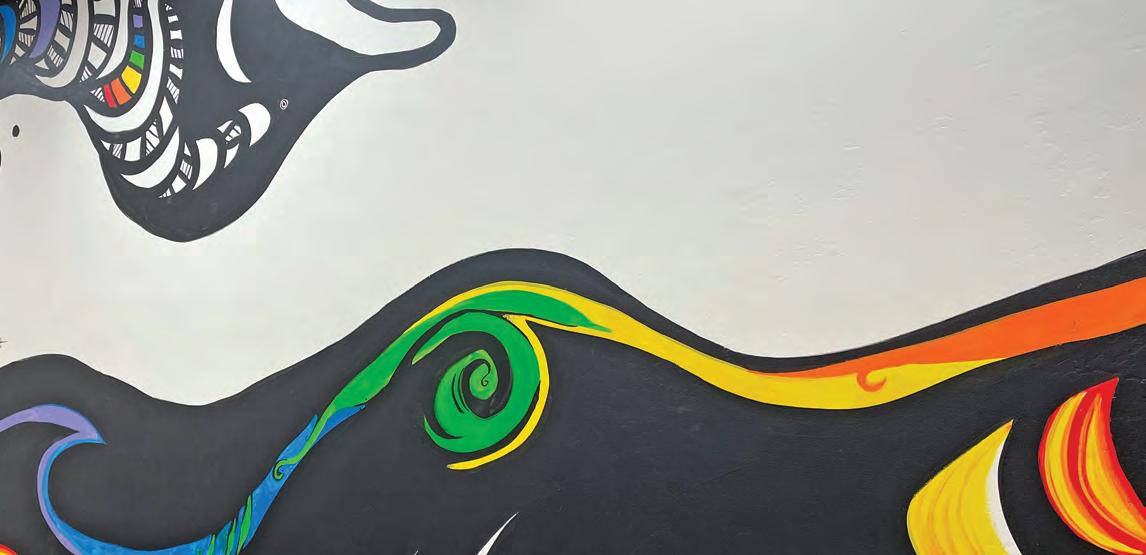
enlivens the basement of the same library. It was created by Kubes while he was the director of security at Western. Started in 2015, the mural sits in the game room of the library — formerly the government documents archive room. The industrial-looking, mundane area needed some livening up. Kubes knew he had to utilize the excess of harsh fluorescent lighting in the room, so he used lots of black and white for contrast and small “lasers” of color to make the piece pop. His inspiration for the piece was the Gunnison community — he asked different people what they wanted to see in the mural. After getting feedback, Kubes went to work in a playful mood and sketched everything
out on the walls in pencil, still visible today.
Kubes also created a mountain lion mural that appears outdoors in the alley behind Miller Furniture. It was created by Kubes, in 2003 while he was a student at Western. Kubes was inspired to create this piece from an encounter he had while at Hartman Rocks one night. He bumped into two mountain lions while riding his bike and watched them run off. He was particularly struck by the eyes. After the experience, Kubes created the mural above the Quigley Hall art studio due to its large size. He had to squeeze in a small four-foot-tall crawl space while working on the piece.
Kubes’ mentor and professor Ludwig “Lud” Stromayer helped Kubes find space to create this. Kubes had help from many to finish the piece including Rick Miller of Miller Furniture, Anne Michelle of the Gunnison Gallery and “Bobcat” who helped cut out the pieces.
Other murals around town can be found in Blackstock Bistro, where a replica of Alphonso Mucha’s “Summer” of his “Seasons” was painted by Stephanie Lee. Outside the Wet Grocer, two images were created by local artist and muralist, Jennifer Vannatta. There is also a Picasso-inspired Guernica themed painting in the alley off Ruby Street near campus. n
 A replica of Mucha’s “Summer” at Blackstock Bistro. Enid Holden
Caitlin Gleason
A replica of Mucha’s “Summer” at Blackstock Bistro. Enid Holden
Caitlin Gleason




c 970.596.0292 steve@bbre1.com bbre1.com
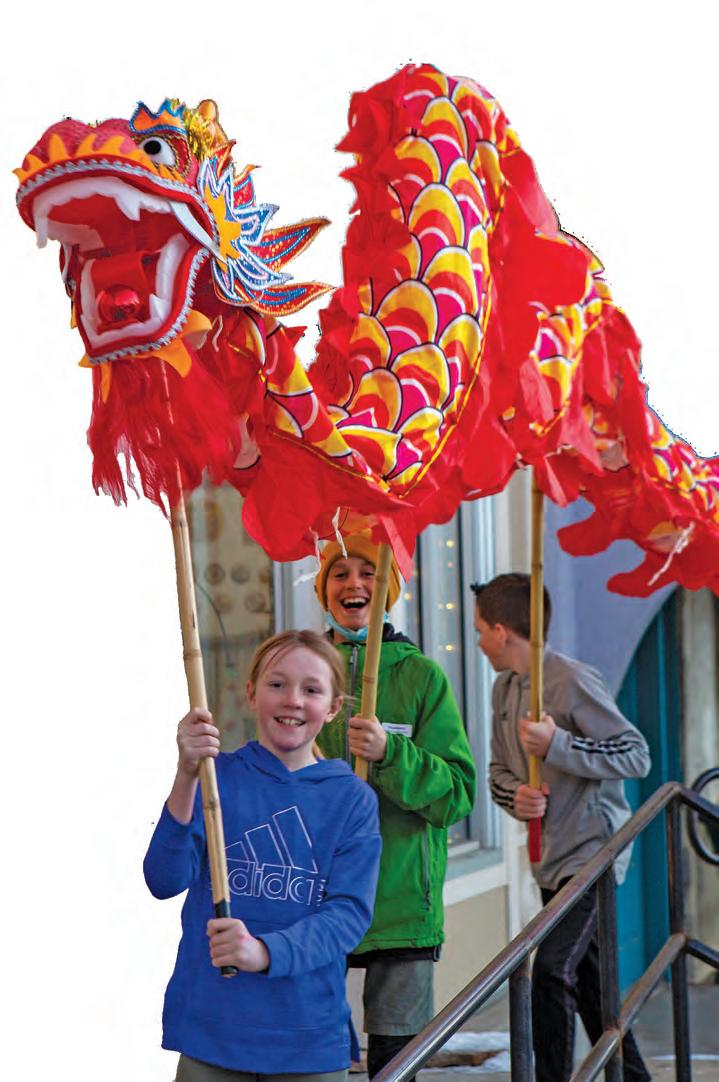

“When
for a professional realtor with local knowledge, great communication skills, integrity, and industry expertise, then definitely partner with Steve Mills for a successful journey with your real estate needs.” -Lorraine Sayer

Gunnison County holds the distinc tion of being the only county on Colorado’s Western Slope with two cer tified Colorado Creative Districts. The only other counties in the state with two such districts are on the Front Range with populations in the hun dreds of thousands. The answer as to why all this concen trated creativity exists high up in a hard-to-reach alpine valley can be found in a surprisingly profound narrative about economic trans formation and the future of 21st century sustainability. It is intrin sically linked to the history of the valley.
The settlement of the valley in the late 19th century had been driven by mining and cattle ranching, but by the 1950s that economy was in crisis. The closure of the Big Mine in Crested Butte all but con signed it to becoming a ghost town. The Colorado Ski Museum records the moment of para digm shift when Dick Elfin, founder of the ski resort in Mt. Crested Butte, traveled there in 1960 with his business partner,
continued on 83













In the span of just one ceramics class at the Front Range Community College, local creator Kristin Gruenberger went from having “no idea” what she wanted to do with her life to finding a passion for ceramic art that has made her a successful and sought-after artist.

I recently asked local ceramicist Gruenberger how she got into pottery, and she said she had absolutely no idea what she wanted to do with her life until she took a clay class in college. Subsequently, with newfound direction she headed to the Metropolitan State University of Denver to pursue a BFA in Ceramics.

After graduating in 2011 with a BFA in ceramics from Metropolitan State University of Denver, Gruenberger began navigating the world of art festivals and markets, where she enjoyed being part of a community of likeminded creatives. She exhibits her work at art festivals around the country including the annual Crested Butte Arts Festival where last year she won the People’s Choice award. She teaches at the Crested Butte Clay Studio, the Gunnison Arts Center and the Art Students League of Denver.
She is currently preparing
BY ENID HOLDENwork for shows in Kansas City, Des Moines and Denver. Her focus is on a collection of whimsical tableware and ceramic sculpture that evoke a sense of whimsy and wonder. Gruenberger’s style is playful and innovative, integrating both wheel and hand-built features. She creates unique forms of function by exploring various carving, altering and texture inlay techniques. These, combined with colorful glazing, create one-of-a-kind ceramic pieces to use in daily life. n
Enid Holden Courtesy Kristin Gruenberger in her studio.continued from 80
Fred Rice, to scout locations.
On arriving in Crested Butte, Eflin knew he had found the perfect place. When Tony Kapusion, the proprietor of Tony’s Tavern, overheard Dick’s comments about the beauty of the area he retorted, "Yah, kid, it’s beautiful but you can’t eat the scenery." Why this moment represents such a powerful shift in mindset is because Kapusion was mostly wrong — you can eat the scenery … or to be more precise, a thriving economy can be built around scenery.
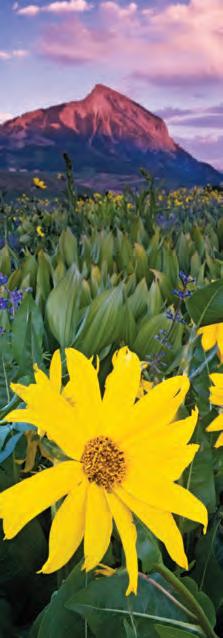

Within two decades of that event, Crested Butte had become a hippie colony of those seeking alternative lifestyles while making a living from supporting the evolving outdoor recreation industry. In 1979, the town emerged as the epicenter of a national debate about whether landscapes were more valuable for the resources they contained or simply as the landscapes they were. The controversy exploded over whether Mt. Emmons, locally known at The Red Lady, should be mined for molybdenum. At the time it was believed to be the third largest deposit in the world for an
continued on 94






A few years back I was cast as the local historical figure, Ellen E. Jack in a play for Reader’s Theatre by Gunnison local, Mike Callihan. The play is titled "Crackpots, Crack Shots & A Cannibal” and was first performed at the Museum in Crested Butte.





In researching the character, usually referred to as Captain Jack, on account of her late husband who had been a sea captain, I was intrigued to find that the golden-haired English lady had published an autobiography, “The Fate of a Fairy” and that two chapters pertain to her life in Gunnison in the 1880s. There are many surviving photos of her too. She arrived a widow, having lost three children to scarlet fever, at the beginning of spring in 1880. This was during the gold rush when the town was just ballooning up, and tents were the most common form of accommodation for the thousands of prospectors streaming in daily.

Leaving her last remaining child with her sister-in-law, Jack arrived by stagecoach wearing her .44 Smith & Wesson and introduced herself as Captain Jack, adopting her late husband’s name to counter her feminine appearance and blond hair. Her first morning in Gunnison found her stumbling into a gunfight, where a wanted man was shot and killed. With his dying breath he bestowed on her his gun. She already owned one, but was happy to take a second and that was pretty much how her life played out — she became notorious for getting into shootouts with the locals and outlaws and even participated in a riot in the local courthouse.

When Ellen Jack arrived in Gunnison from the East Coast, she had stocks and bonds sewn into her bustle and, reputedly, a little bag of diamonds which she wore around her neck. Many articles written about her are based on her own account of things in her autobiography. But when I went to further depths of research in old newspapers, I found that she had been involved in a fraud case, where the hotel she owned with her late husband had been over-insured and, it seems, she burnt it down for the insurance money. She also may have been remarried to a second man, according to the report.
Captain Jack soon established a crude eating house (restaurant would be too fine a term) on Tomichi Avenue on a piece of land she bought — the entire block across the alley behind the Gunnison Arts Center.





Her establishment, which faced onto Hwy. 50 was named Jack’s Cabin — not to be confused with the other Jack’s Cabin beyond Almont. She also set up a bunk house where she rented out spaces to sleep, literally pine boughs covered with a blanket to make a bed.

Her entrepreneurial spirit soon figured out that she could do a double deal — gamblers would be up all night in the dancehalls and gambling houses that proliferated in Gunnison at the time — and they rented spaces to sleep in the daytime. Prospectors, however, did their work in the daylight and
returned cold and tired from a day’s panning. They would rent a bunk to sleep on at night. In addition to room and board, she also did a lively trade serving meals, for which she plied her pot with deer and other animals that she shot. This kept her eye sharp — hence the Crack Shot reference in the play title — which was handy for the numerous shoot-outs she found herself drawn into in her years in Gunnison.
She became a great favorite with freighters and prospectors and learned from them how to prospect for ore in her spare time. Her room and board business thrived to such an extent that she had to buy more lots to
expand. She also set up a saloon on her property run by Jeff Mickey, but she forbade gambling. The log cabin she lived in still stands, the yellow cottage behind the Art Studio on Hwy. 50 and the second building across the alley from the arts center.
In her first local shootout, Captain Jack saw a man with a gun confronting one of her unarmed tenants, about to shoot. She whipped out her gun and shot off the man’s hand — the one holding the gun, that is. She saved her tennant’s life, but the man who lost his hand took her to court and she was fined. This made her very resentful, because she was quite parsimonious and hated parting with money. At one point she wrote, “… the only friend I had on earth was money, and not only a friend, but power; that I must stir and do something.”
In fairness to her, men used to have gun fights all over Gunnison, and there were often dead bodies lying around the alleys and even unlawful hangings on Tomichi Street, according to “Historical Sketches of Early Gunnison” and other sources.
Much of her story checks out. I found the properties she owned in the County assessor’s records and there remain newspaper accounts and court records of her dealings. She later acquired a second strip of land where the Econolodge now stands. At the time, that was the main entrance to Gunnison because the route to Gunnison went through Saguache before Monarch or Marshall pass was opened.
Captain Jack was extremely enterprising and soon accumulated lots of money. She also listened keenly to the prospectors talking in her dining establishment and decided to try her hand at finding claims. She discovered a large clump of black ore, bought the claim, and became part owner of the Black Queen Mine. Ironically, it was this success that later led to her downfall: a subsequent marriage to a Richard D. Walsh enabled him to get his hands on her fortune. She had to sue him in Denver as a bigamist in order to get the marriage annulled — by producing his wife who had been hiding out in Canada. As a result of this, she lost her widow’s pension and was once again found guilty of fraud.
Of the many adventures she engaged in, one was due to her friendship with Colorow. He was a medicine man, one of three chiefs of the Mountain Ute nation, who used to get their annual pay-out from the government on a ranch near Salida. Chief Ouray was the political chief, Shavano was the war chief.
Colorow used to trade skins with Jack, but it seems he had a thing for blonds, and would wear a lock of her pale hair pinned to his blanket. This fondness of Colorow’s for blonds is mentioned in other sources. When there was a Ute uprising down the Main Street of Gunnison, due to the killing of a boy,
Photos courtesy of “Fate of a Fairy”Ellen shot and killed several Ute braves with her gun. Colorow thus regarded her as a brave warrior. When he heard that she had been struck in the forehead with a poisoned ax, he rode down Main Street with a white tablecloth he had grabbed in some establishment as a peace flag and administered an antidote to the wound. Although she was sick and foggy for many days, she ultimately recovered, although she bore the scar on her forehead for the rest of her life.
Jack was well respected by the freighters and surveyors because of her marksmanship, business savvy and refined tenacity. The talk around her tables was of shootouts, Ute uprisings, snow slides, ore strikes, railroads and mining camps. Her successful business ventures enabled her to buy a one-half partnership in the Black Queen Mine near Crystal. The mine eventually produced around $100,000 in silver ore. She sold it for $25, 000 and later it was sold for millions.
At some point in her years here, Captain Jack realized that the men who were working her mine for her were trying to steal her ore, while she ran her boarding house and her kitchen. She showed up at the site and found a line of donkeys loaded with silver ore being led away from her property. She whipped out her gun and shot off one man’s ear and the other’s hand when he retaliated by pulling a gun on her. The men gave orders for another to keep the donkeys moving. At this point she shot and killed the first seven donkeys, and the theft came to a halt. This also ended up in court, but this time she was acquitted, because she owed the money from the silver to the bank, and had the theft gone ahead, she would not have been able to pay her debts for the claim.

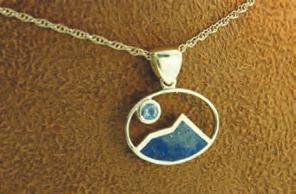




“I do not fear man or devil; it is not in my blood, and if they can shoot any straighter or quicker than I, let them try it, for a .44 equalizes frail women and brute men, and all women ought to be able to protect themselves against such ruffians,” she said.
Jack moved on to prospect in Leadville and Colorado Springs’ High Drive became her home after 1900, where she spent summers renting cabins on her property, leading tours and burro rides. She spent winters with her pet burro, cats, parrots and a snake. Her tourist business suffered from competition, floods and financial woes. By 1921, the cabins closed and Captain Jack’s competitor, Nora Gaines, purchased the property. After Captain Jack’s death, it is reported that she left her surviving daughter five dollars. A memorial tombstone was placed at the trail site by unknown persons. n
Bobby always knew he wanted to make his way further West to the Gunnison Valley to live the mountain lifestyle. His dream became a reality in 2015 when he was finally able to call Gunnison home. His local knowledge, understanding of the real estate market, and connection to the community make Bobby an asset to his clients. Bobby would be honored to help find the perfect home for you!















Gunnison, Colorado. What an interesting place to grow up. A place where I can do everything from fixing a fence to walking out on stage half-naked in the school play. Many of my peers have described my home town as a boring place with nothing to do, but this couldn’t be further from the truth. There is plenty for kids growing up in this valley to do: sports, 4-H, drama and Science Olympiad — and I am involved in it all.
Once upon a time, before the pandemic, I was a freshman boy who might have been a wee bit over-involved in after school activities. My days began at 6 a.m. I’d be at school by 6:30, and I would not leave until 8 or 9 p.m. Occasionally, the groups I was a member of arranged trips out of the valley — like the one to attend the 4-H leadership development conference in Denver.

The first thing our ragtag group noticed upon arriving in Denver was a difference in temperature of 45º. The next thing we noticed was that the frame backpacks in which we had all packed our gear were noticeably out of place in the five-star hotel where we found ourselves. Unaware of our disorientation, our 4-H leaders kicked us out of the car and told us to wait in the lobby. Seems simple enough, right? What could possibly go wrong?
Between this group of Gunnison kids and the lobby stood — dun, dun, duuuun — a revolving door. Gunnison, you see, has a noticeable absence of revolving doors, and for most of us this was our first time in the big city.
No problem. We’re Gunni kids, no mountain is too high.
With enthusiastic gusto, the six freshmen all hit one corner of the revolving door, while three sophomores did the same on the opposite side. We quickly realized two things: one, only two people could fit through the door at one time, and two, pushing in opposite directions was decidedly counterproductive. Undaunted (but maybe a bit embarrassed) we stepped back to examine the situation. A lively debate ensued as to which direction the door might spin and how exactly one was to use such a thing to go from
the outside to the inside. Meanwhile, the two seniors present simply watched and laughed.
Deciding that the door spun counterclockwise, we tackled the problem before us. Lining up on the right side of the door, we gave it an enthusiastic push, which sent one of our group hurtling inside. To our dismay, the door continued to spin long after we stopped pushing and we were certain we had broken it. To make matters worse, one of our own was now stranded on the wrong side of the impossible door. How to get to him?
As we pondered this new development a group of kids from Salida stepped in front of us and passed flawlessly through the door causing the seniors from our group to laugh even harder. After seeing how the other kids had passed through, we attempted to replicate their passage. Alas, our struggle had not yet come to an end for we then made the mistake of all trying to fit through the door at once, a process which ended with me stuck with two other boys and our backpacks in one compartment of the door until someone pushed the door around and we all tumbled out into the lobby into an undignified pile — like in a cartoon.
Eventually, everyone made it into the hotel and everyone made it home, one of many successful journeys that defined my experience growing up in (and out of) Gunnison. When you grow up in a small remote town every trip you take is destined to be an adventure from start to finish, and every adventure brings with it life lessons — be it how to open a revolving door or how not to take yourself too seriously. n
We’re Gunni kids, no mountain is too high.







continued from 83
element vital in producing an alloy with chromium, called chrome moly, which gives steel a high-strength heat-resistant plating in demand by the fossil fuel and nuclear industries.
The Red Lady conservation movement and its ultimate success in defeating




the mine would prove to be the defining event in Crested Butte’s history, and it gives us the Red Lady Salvation Ball (now in its 45th year). At the annual ball, a "Red Lady" is crowned (the woman who did the most of to preserve the environment that year), and she must attend in-
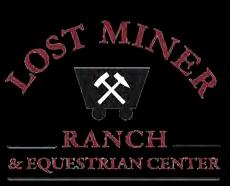

 Courtesy of Gunnison Arts Center
Danica Bona
Arts class at the GAC.
The Gunnison Creative District includes Main Street businesses.
Courtesy of Gunnison Arts Center
Danica Bona
Arts class at the GAC.
The Gunnison Creative District includes Main Street businesses.
costume all the other quirky holidays with all of its other one-year-term aristocracy (King and Queen of Soul, Flauschink King and Queen, Vinatok’s Green Man) in the Crested Butte calendar. These beloved idiosyncrasies point to a wider elevation of creativity, from that of a distraction from the drudgery of life to that of a creative life goal in and of itself.
Crested Butte’s experience was not unique within the state and Colorado reached the second important stage in this paradigm shift in 2010. Still in the depths of a recession that had hit ski towns especially hard, Governor Bill Ritter changed the name of the Colorado Council on the Arts to the Colorado Creative Industries (CCI) within the Colorado Office of Economic Development. Although the term Creative Industries had been circulating in academic circles for a decade, Colorado’s usage of the term denoted public policy at the state or national level.
The concept of creatives embraces a wider set of activities that includes craft makers and artisans and is unapologetically entrepreneurial. It signaled a watershed change; whereas the arts had generally been regarded as a charity case, Creative Industries


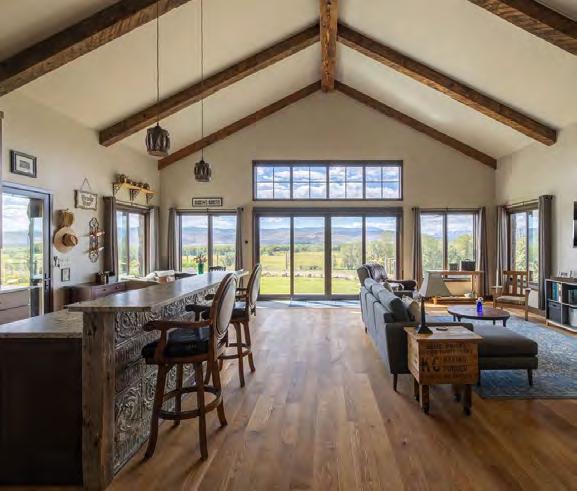

continued from 95
could be the dynamo of a thriving and sustainable economy. Other factors that lead to the area being so rich in artistic endeavor is that locals have time — with less commuting, stress and time wasted finding parking or ferrying kids to activities, life is simpler and slower. This fosters creativity.
Another is that the abundance of nature is an inspiration to musicians, film makers and visual artists alike. Yet another factor is that artisans of the maker variety need cheap spaces to work, and traditionally Gunnison has been a place with resources for innovation. In addition, local resources, community theatre groups and artist/writer’s groups are extremely supportive of one another to counter the remoteness of this lifestyle. There is less competition for gallery space than in the cities and artist co-ops such as the shop artists at Gunnison Arts Center and Paragon Gallery provide supportive outlets for artists.
In 2012, the state began designating certified Creative Districts with nearby Salida being among the first three to achieve that status. Crested Butte was certified in 2016, and that year a group from the Center for the Arts attended the Americans for the Arts Conference in Boston where the latest Arts and Economic Prosperity survey was being presented. Melissa Mason, the chair of the Crested Butte Creative District, recalls

 Courtesty
Courtesty

being lauded in the plenary session because Crested Butte had such an incredibly high percentage of working artists relative to their total population.
Crested Butte’s initial application to CCI had been framed as “From Gunnison to Gothic” to include the entire valley, but had been rejected as unwieldy since such multitown Creative Districts had not worked well in the past. Therefore, Gunnison began work on their own application in 2018.


The process involved many meetings and solicitations for community input in order to create a “Gunnison” identity, which would ultimately emphasize our relationship to the arts, music venues and arts profile businesses as well as an intersection of local culture, ecology and frontier-style innovation, maker spaces and creative businesses. The certification board that came to view the locale was impressed by the solo artist community, galleries, Gunnison Arts Center, the South Main Studios and reclamation site, Western arts programs, ID Sculpture and the I Bar Ranch. There was evidence that the performers and
continued on 98
continued from 97
artists of the city were working together with the schools to foster a strong creative identity.
The Gunnison Arts Center led the initiative and will continue to serve as the administrative hub for Gunnison’s Creative District, as the Center for the Arts serves the same role for Crested Butte’s. Both towns have been fortunate to receive tremendous support from their municipal administration and political leadership. At a county level, the Tourism and Prosperity Partnership (TAPP) has funded Crested Butte’s membership in the Colorado Creative Corridor, a five-town (Crested Butte, Salida, Ridgway, Carbondale and Paonia) route through the Rockies, which Gunnison also hopes to join.
One of the benefits of Creative District certification is that it makes available a wider range of state funding and it also connects commissioners in towns grappling with similar problems, particularly with a phenomenon of over-success that is causing gentrification and a housing crisis. Some of the Creative District projects embraced in Crested Butte were the creation of a single unified event calendar and an initiative to

document the history of artists in the valley that led to an exhibition of historic art evolution that involved a collaboration with Crested Butte artists, Western students and the Gunnison Arts Center.
Commissioners of a Creative District work on marketing and branding the district, community arts advocacy, support and educational efforts for local creatives, curation of paid opportunities for artists, interface with Public Art Commissioners and promoting arts education opportunities and planning.
One way members connect is at the annual Colorado Creative Industries Summit, a three-day jamboree that brings together hundreds of arts and cultural leaders from across the state. They also come from across the nation and abroad because Colorado has become the acknowledged cutting edge leader for the intersection of creative industries and public policy. It was at these summits that the commissioners from the Creative Corridor towns came up with their concept for the alliance.
Being named to host the CCI Summit is an enormous honor and an indication of a town’s “arrival” as a cultural destina -
tion. Because of COVID, last year’s summit was delayed until September and held in Steamboat Springs. The next one will not be until 2023 and will be held in Crested Butte. The dates are set for May 30 - June 1, so this gives the whole valley plenty of time to plan and prepare to present its magnificent creativity. Given Gunnison’s close proximity and new Creative District status, it was decided to schedule a Gunnison After Party — Colorado Music Showcase for June 2-3 at the I Bar Ranch, which would feature acts from all over the state in a festival atmosphere.
With these recent developments as signposts of an evolving Gunnison County, the Creative Industries become not just complementary elements to the outdoor recreation industry. Rather, they become the central focus of a future post-industrial economy that operates in sustainable harmony with its surroundings . n
Jeffrey Taylor is the president of the Gunnison Creative District Board of Directors and also a member of the Crested Butte Creative District Commission.
Allan Ivy


The call was towards Monarch Pass, a significant distance, and it was night, so we needed extra time to get from the condo to the ambulance. The car was crushed from the front side, and the dashboard with animal remains was pushed far into the car. We extricated the patient, then provided treatment and transportation to the hospital. The patient thankfully recovered. When we go to these scenes, every minute – really, every second, counts. Getting to the scene, treating the patient, and getting to the hospital all take precious time. The more time we save, the better chance our patients have. A new station will greatly improve our response time.”
A capital campaign is underway to address a critical need for a new station for Gunnison Valley Health Paramedics. We are over halfway to the $8.5 million needed for the new station.
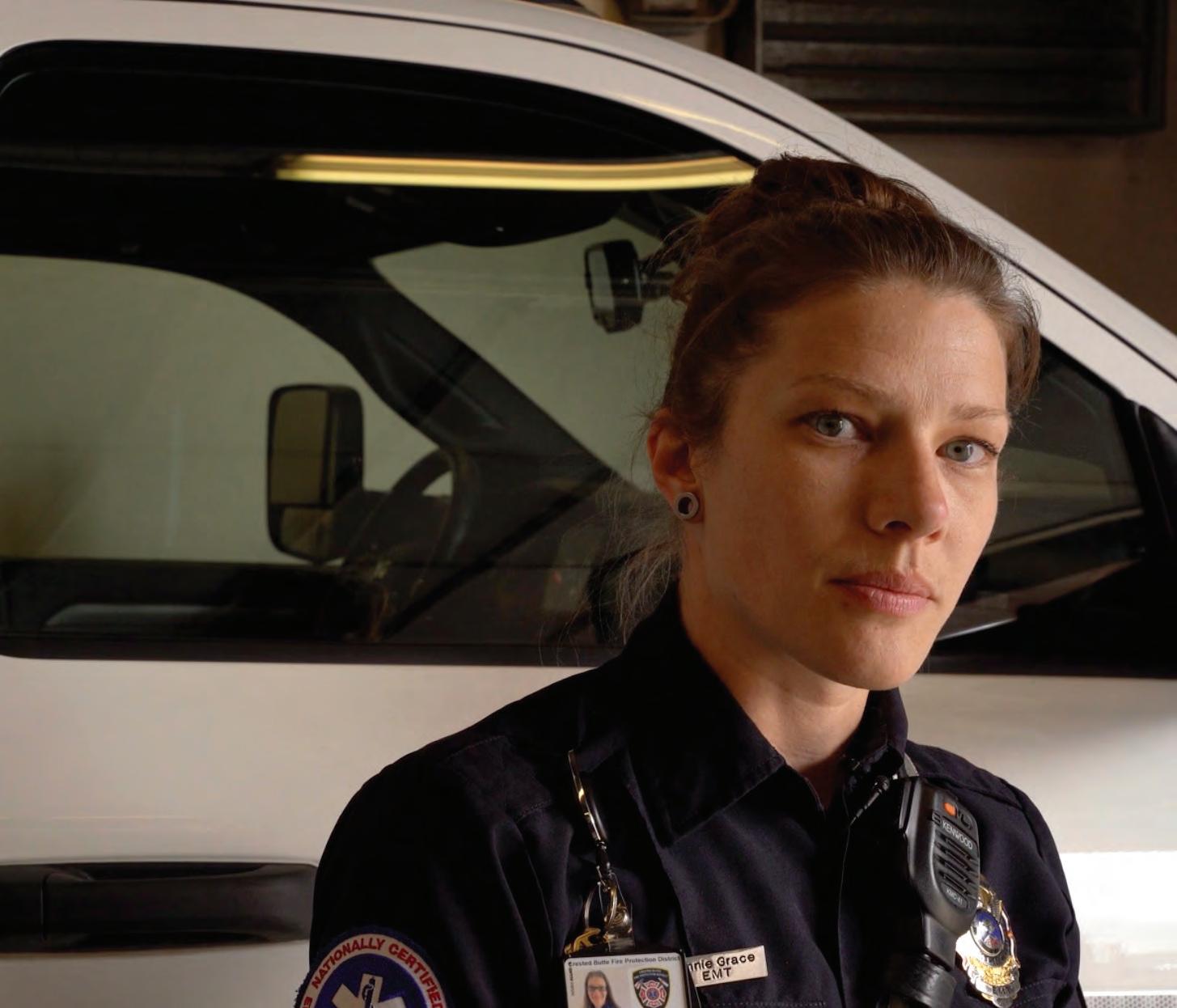

Jenny Birnie, Executive Director Gunnison Valley Health Foundation
jbirnie@gvh-colorado.org 970.642.8400 gunnisonvalleyhealth.org/savelives

“We got the call ‘vehicle vs. elk on west highway 50.’
The Gunnison Country Times podcast ThinkRadio recently hosted Gunnison Valley Health Chief of Emergency Services, CJ Malcolm and GVH Foundation Executive Director, Jenny Birnie. The conversation centered on challenges the EMS department faces due to a shortage of space and infrastructure at the organization’s current location on the GVH campus in Gunnison — and on the fundraising effort ramping up this summer to do something about it.
This excerpt, edited for length and clarity, — reveals some of the backstory behind the need: how EMS operations are funded, the size of the service area compared to other departments, the cost of a new facility and more.
ThinkRadio: Let's build a little foundation, CJ, on what this business is like. A lot of services like yours are actually legally classified as an essential service. What is that? And what does it mean that your organization doesn’t have it?
Malcolm: There is federal legislation that identifies what essential services are, and services like police and fire have that designation. EMS does not necessarily have that designation. It's actually state-to-state depending on whether they've adopted that or not. And there is logic and reason behind that. It's simply because EMS is a relatively young profession.
ThinkRadio: Is that because historically the industry was made up of private companies in competition with each other?
Malcolm: It was a mix between private and public … But they realized, were they really doing any form of medical intervention? And it wasn't until the Vietnam War that we learned that you could really train an individual, or a soldier for that matter, in life saving techniques, address them in the field and bring them back to a MASH unit. That was a very successful program.
ThinkRadio: And that’s kept evolving. But

most people assume that EMS and fire and police service are all funded the same way. That’s not true?
Malcolm: It’s not, and it limits our ability to collect local taxes, and that takes extra steps in a community identifying that there is a specific need to fund the service. And really, if you look at legislation, for instance, the state doesn't even require an EMS system, believe it or not. People have just grown so used to the service, they assume it's like police and fire understandably, so call 911, and we come.
ThinkRadio: And you do come, but at what cost?
Malcolm: We have a budget of approximately $2 million, and we cost recover approximately a million dollars from Medicare, Medicaid and private insurance. That actually is a fairly decent recovery rate, it can be as low as 30%. Larger organizations like American Medical Response, have their own lobbyists, both at the state and the federal level, and they're extracting money from areas that we can't necessarily tap. They also have economies of scale, where they're running 100,000 calls in Denver, for example, to our 1,600 calls.
ThinkRadio: So, where does the extra money come from?
Birnie: Twenty plus years ago, there was an effort that was led by Dr. John Tarr to make our paramedic services a department of Gunnison Valley Health. That is how it is now. And that means that if there's a loss, which there is for our EMS service, that GVH covers that loss, we subsidize the service.
ThinkRadio: On top of that, you’ve launched a campaign to raise money for a new facility — with a budget north of $8 million. Why do you believe that is necessary?
Birnie: I remember the first time I walked in there two and a half years ago, and I was literally blown away. I was like, this really is a barn. I mean, they call it the “EMS barn” for a reason. It's just this shed that's located next to the hospital. It has like three or four, you could maybe call them office spaces. They've recently even converted, you know, a storage area to be an office, just to put in perspective,
but they're on top of each other.
Malcolm: It was a mop closet.
Birnie: And they got rid of the kitchen, and it’s just a poor way to treat an EMS service of this caliber. It impacts their ability to do their jobs.
Malcolm: It's a heavy burden on our culture, it's a heavy burden on the public, and they don't even know that burden is there. When it takes us at nighttime, just to get to the ambulance, six minutes, and the industry standard response time is under a minute. When I was in the city, 30 seconds. And so people take for granted and assume that emergency service here is functioning the way they were brought up to know, and it's just not a fact.
ThinkRadio: Not to mention that your service area is enormous compared to other areas. How big is it?
Malcolm: It’s twice the size of Delaware. I actually used to say that just for fun, and I thought, you know, I've got to put my money where my mouth is, and I looked it up. The state of Delaware has like 2,000 square miles, and we have a 4,000 square mile area.
ThinkRadio: So what’s the plan?
Birnie: The plan is to raise money and build the building. Our budget currently is $8.5 million, and we've raised about half of that money at this point. Our goal is to hit it hard this summer, and hopefully raise the rest of this money and make it a two year campaign.
To listen to the rest of the conversation, scan the QR code below. To learn more about the Seconds Save Lives capital campaign call Jenny Birnie at 970.642.8400 or email jbirnie@GVH-colorado.org. n
Freshly groomed runs are lit by early morning light.
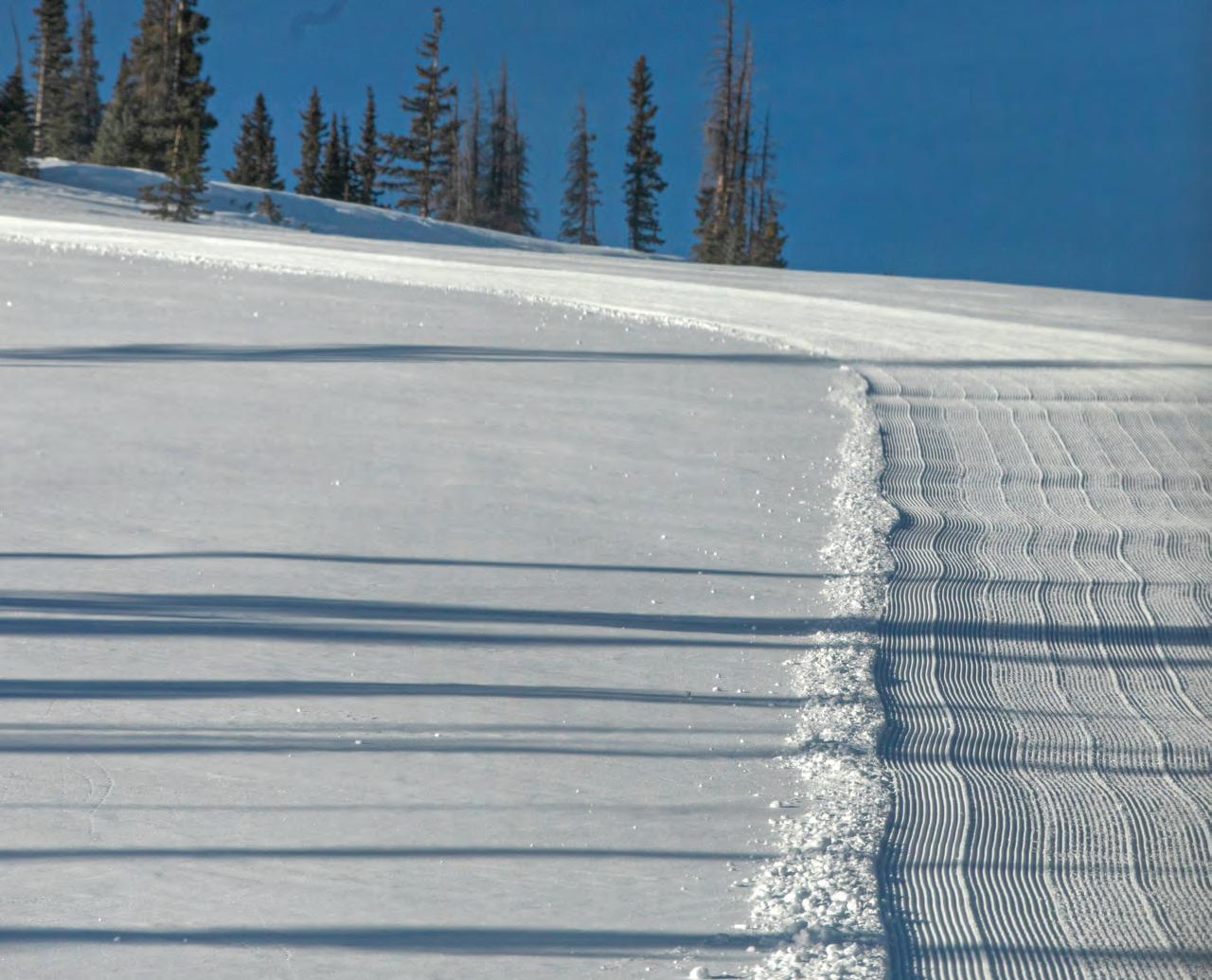 BY JACOB SPETZLER
BY JACOB SPETZLER
“Well, to sum it up, we make things flat,” said Kannon Thompson, the supervising groomer at Monarch Mountain during his 4:30 a.m. lunch break. Every night during the ski season, the grooming crew grasp the joysticks in their outer space-like snow cats for a 10-hour shift that starts at 11 p.m. They spend the solitary minutes crawling the blues, greens and a few black runs to create the perfect corduroy (or “product” as Thompson calls it) for the next day’s skiers and boarders.
“We go slow to go fast, that’s our main creed,” said Thompson.
Groomers work at night and away from the crowds. They are among the ski industry workers who rarely come to mind when people are skiing. Yet their work is foundational to keeping resorts running smoothly and safely.
Like their daytime coworkers, they are also understaffed. This past season, three groomers worked at Monarch nightly. During a normal, fully staffed year, Monarch typically has four or five for each shift. Thompson says his department is having trouble hiring committed employees. Many prospective workers
would like to swoop in for just a season, “just to be able to say they did it”, but the training process is relatively lengthy — 40 ho urs of ride-alongs before a co-pilot shift. That puts a strain on management.
“This requires a lot more than just “needing a job,” Thompson said.
Sam Dobsky, a groomer working nights with Thompson, says the staffing shortage becomes most apparent after a storm.
“You gotta keep the parking lots clear, and
Monarch groomers find beauty in their difficult jobs
Best Steak
Ol’ Miner Steakhouse
Best Wings
Powerstop
Best Coffee
Mocha’s Coffeehouse
Best Dessert
Big Cookie - Gunnisack
Best Sandwich
Surefire - Firebrand
Best Salad
1/2 & 1/2 - Mario’s
Best To Go/Delivery
Patcharee’s Kitchen
Best Chef
Luke Martin - Blackstock Bistro
Best Bartender
Molly Pike - Blackstock Bistro
Best Server
Carly Bare - Back Country Cafe
Best Barista
Stephanie - Gunnison Coffee Company
Best Restaurant Service
Back Country Cafe
Best Outdoor Dining
Twisted Fork
Best Food Truck
Burnell’s Farmhouse Eatery
Best Place to Watch Sports
Ol’ Miner Steakhouse
Best Retail Store
Gene Taylor’s Sporting Goods
Best Retail Sales Person
Stephanie Dawes - Toggery
Elevated
Congratulations to all of our hardworking local businesses. These are the winners of the 2021 People’s Choice Awards. Stay tuned for the 2022 voting and awards this fall!
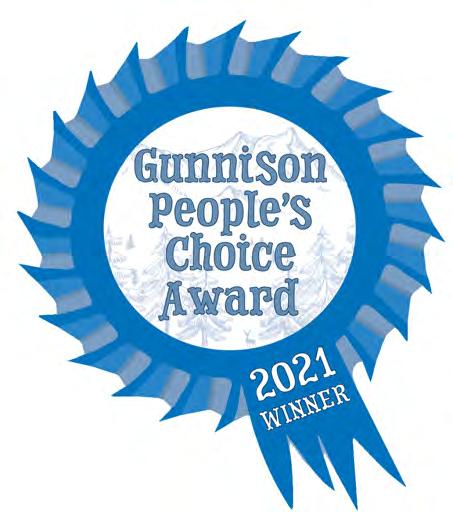
Scan this code to read the publication!
Best Clothing Store
Tango
Best Home Furnishings/Decor
Miller Furniture
Best Salon
Absolute Miracles
Best Barber
Fast Eddy’s Barbershop
Best Hardware Store
Fullmer’s Ace Hardware
Best Lumber Yard
Western Lumber Best Bank
Gunnison Bank and Trust
Best Bike Shop
Double Shot Cyclery
Best Outdoor Retailer
Gene Taylor’s Sporting Goods
Best Art Gallery Gunnison Arts Center
Best Gift Shop
Hope & Glory
Best Liquor Store
Wet Grocer Liquors
Best Dispensary
CABIN Cannabis
Best Automotive Repair Shop
Buff’s Collision Specialists
Best Automotive Mechanic
Brian Oliver - Gunnison Auto
Best Dentist
Dr. Brady Bichon - Gunnison Family Dentistry
Best Doctor
Dr. Laura Villanueva - Gunnison Family Physician
Best Optometrist
ABBA Eyecare, Dr. Robbins
Best Orthopedic Surgeon
Alpine Orthopaedics & Sports Performance
Best Non-Traditional Medicine Practitioner
Dr. Roanne Houck
Best Massage Therapist
One Sea Wellness, PJ Brown
Best Yoga Instructor
TIE - Chris Mayfield & Autumn Brown
Best Personal Trainer
Jane Tunnandine - Colorado Fitness
Best Veterinarian
Dr. Seward, Gunnison Valley Vet Clinic
Best Realtor
Audrie & Josh Townsend, Clarke Agency
Best Lawyer
Thomas Riser
Best Craftsman
Paul Pike, Pike Builders
Best Outfitter
Tenderfoot Outfitters
Best Fishing Guide
Andy Cochran and Cody Rowe, GSO
Fishing
Best Lodging Property
Three Rivers Resort
Best Workout Facility
Colorado Fitness
Best Home Service
Alpha Mechanical Solutions
Best Builder/Contractor
Chris Klein Construction
Best Insurance Company
Pete Klingsmith, State Farm Insurance
Best Financial Advisor
Shondeck Financial Services and Insurance
Best Accountant
Stice & Co.
Best Graphic Designer/ Marketer RoShamBo Marketing + Creative
Best Elected Official
Jonathan Houck
Best Rancher
TIE - Andy Spann, Hannah Cranor
Best Cleaning Service
JK Services
Best Pet Boarding
Critter Sitters
Best Photographer
Erin Chicoine Studio E Photography
Best Artist
Jennifer Vannatta
Best Locally Made Product
Dobrato Resophonic Guitars
Best Local Band
MILLK
Best Local Event
Cattlemen’s Days
Best Local Personality
Ron Earl
Best Teacher
Stacy Harbaugh
Best Local DJ Harv Reese
A groomer churns up snow near the top of Monarch.



American Association of University Women (AAUW) was established in 1881, locally in1927, to advance gender equity for women and girls through research, education, and advocacy. Fourth Sunday in July featuring original art. Information may be requested by emailing aauwartinthepark@yahoo.com. Summer reading program at the Gunnison Library. Scholarships at WCU for non-traditional students. Ronda Connaway at 970.641.2638, connaway302dsw@gmail.com. “In principle and in practice, AAUW values and seeks diverse membership".


The Center for the Arts is your home for artistic expression and cultural experiences in the Gunnison Valley. Join us for concerts, festivals, art classes, literary lectures and workshops, kids' programming, and more. Volunteers always welcome.


Crested Butte Nordic works to build a thriving, healthy community by providing access to critical outdoor recreation opportunities through our events, programs, and 50 kilometers of winter trails. Join us in summer for one of our trail racers or in winter for cross-country skiing and snowshoeing by visiting cbnordic.org, 970.349.1707. 620 Second St., PO Box 1269, Crested Butte, CO 81224.

A 30-year-old organization formed to forever protect and steward open lands for vistas, recreation, wildlife, and ranching, thus contributing to the preservation of Gunnison County's unique heritage and quality of life. Make a donation to the Land Trust today to be part of Gunnison County's future, and join our volunteer team to help us care of our local lands and put on great events that further fundraise for our cause!
Jake Jones, executive director, 970.349.1206, www.cblandtrust.org, jake@cblandtrust.org.
The Crested Butte Museum preserves, shares, and celebrates the history and traditions of Crested Butte and The Gunnison Valley. Through outdoor historic tours, fun annual events, and interactive exhibits, we connect people to the past, this place, and each other. We are also a unique venue to host your next special event. Check out our website for upcoming events, opportunities to volunteer, and much more at www.crestedbuttemuseum. com or call us at 970.349.1880. We are located at 331 Elk Ave, Crested Butte, CO 81224. Follow us at @CBMuseum on Instagram!
Erica Vernon, Executive Director, can be reached at erica@mycbmf.com or 970.300.3409 ext. 701.
In addition to world-class music, education remains a central component of CBMF’s mission. Our expanded Community Enrichment program includes summer immersive music camps with scholarship opportunities, free community lectures, masterclasses, and free senior center performances.The passionate generosity of supporters of the arts sustains Crested Butte Music Festival’s mission in various ways, from contributions, sponsorships, and volunteer ing to attending performances. Please join us today!



The Community Foundation of the Gunnison Valley strengthens and enriches the community through engaged philanthropy, thoughtful grantmaking, strategic education, and collaborative leadership. “Here For Good.” Are you “Here For Good” too? Learn more at CFGV.org or 970.641.8837 PO Box 7057 / 525 N. Main Street, Gunnison, CO 81230.
GVM is a youth mentoring organization serving Gunnison and Hinsdale Counties. Our wait-listed youth are excitedly waiting for trusted adults like you to be matched with incredible young folks like them. Go to the GVM website or call to find out how you can become a mentor. 101 N 8th St., Gunnison, CO 81230 970.641.5513, www.gunnisonmentors.com, gunnisonmentors@gmail.com.
Living Journeys is a nonprofit dedicated to supporting Gunnison County residents impacted by cancer. We provide financial grants, private therapy and support groups, food assistance, and life-enriching programs to individuals diagnosed with cancer, as well as their families and caregivers. We invite you to support our mission by making a donation, attending one of our summer events, or becoming a volunteer. Learn more at livingjourneys.org or get in touch with us at info@livingjourneys.org or call 970.349.2777.

The Pantry provides free nutritious food to those who need it in a kind, confidential and supportive environment. You are always welcome. Shop the Pantry Monday 1-4p, Wednesday 1-7p or Thursday 10a-2p (Adults 60+). Volunteer or donate to help our neighbors in need. 970.641.4156, 321-C N. Main St on the SW corner of Main & Ohio Gunnison. GunnisonCountryFoodPantry.org.
Great Libraries Build Great Communities! Open the door and see yourself at the library. Gunnison Library · 307 N. Wisconsin · 970.641.3485
Crested Butte Library · 504 Maroon Avenue · 970.349.6535 gunnisoncountylibraries.org.

Habitat for Humanity provides homeownership opportunities to income-qualified buyers in Gunnison County. Our mission is to contribute to the pool of affordable housing in the Gunnison Valley through collaboration efforts with partner families, community volunteers, donors and sponsors. We could not build truly affordable homes without volunteer support. Help makes dreams a reality for a family in need in our community by volunteering today! Stop by our jobsite at 209 S. 6th Street in Gunnison to see our progress, get information on our website or contact us at: PO Box 1295, Gunnison, CO 81230, 970.641.1245, hfhgunnisonvalley.org

“Gunnison County’s Environmental Leader".Visit our website hccacb.org to become a member, donate, sign-up for news alerts, or volunteer for one of our fun and amazing stewardship events.
KBUT KBUT is Community Radio for the Gunnison Valley, providing the community with local news and info, and a volunteer-powered soundtrack to your life in the high country. To become a part of KBUT, visit KBUT.org. You'll find information on how to support our mission by becoming a member, or join our family of volunteers. KBUT.org, 970.349.7444 (Air Studio) and 970.349.5225 (Business Office), Info@KBUT.org.


The mission of Project Hope of Gunnison Valley is to support, educate and provide confidential advocacy to individuals affected by domestic violence, sexual assault, and / or human trafficking. If you would like to help support our mission, please visit www. hope4gv.org to learn more about opportunities to donate and volunteer. 24/7 Crisis Line: 970.275.1193, Office phone: 970.641.2712 | info@hope4gv.org, www.hope4gv.org, @ProjectHopeGV on Facebook, Instagram, Twitter and Tiktok.
Sustainable Crested Butte was founded in 2016. Our mission is to build a wastefree Gunnison Valley through our Recycle Train and WasteFree Events programs. Everything we have accomplished since our founding can be directly attributed to the efforts of volunteers and donors like you. To learn more or join us in our mission, visit www.sustainablecb.org or email sustainablecb@gmail.com.


Creating sustainable and affordable housing in the Gunnison Valley. Join us in our efforts to increase
housing opportunities for those who work, live and play in the Gunnison Valley. info@vhfund.org.

The West Elk Hockey Association is a nonprofit corporation promoting the growth and advancement of ice hockey in the Gunnison Valley. WEHA provides a safe and positive hockey experience by educating, encouraging and developing all participants. West Elk Youth Hockey Association is always looking for volunteers for our events, to help coach youth hockey teams and donations to help keep our cost low for our participants. Please contact Cody Aidala if you would like to get involved, wehockey@gmail.com, www.wehockey.org.
Advocating for the appreciation and preservation of wildflowers.
Join the Crested Butte Wildflower Festival during July 8th-17th for exciting, wildflower inspired events including guided hikes, art, photography, culinary, birding & butterflies, and many more. Visit our website at www.crestedbuttewildflowerfestival.org for more information. PO Box 216/716 Elk Avenue, Crested Butte, CO 81224 www.crestedbuttewildflowerfestival.org, info@cbwildflower.com/970.349.2571.

As a vibrant community-based arts organization, the Gunnison Arts Center contributes to the wholeness of our community through an educated, adventurous and integrated approach to the arts that cultivates participation by community members and visitors as well as engages other organizations in meaningful partnerships and alliances. It creates opportunities for people to engage in the arts and with each other. Its mission is to cultivate and promote the arts in the community by unleashing creativity, connecting people, and enriching cultural horizons.
102 S. Main St. Gunnison CO. 81230, 970.641.4029, gunnisonartscenter.org.
Six Points Evaluation and Training, Inc. is a private, nonprofit organization serving people with intellectual disabilities and people with traumatic brain injury in Gunnison and Hinsdale Counties. Six Points is home to the Thrift Store, which was established to provide a community-based work environment for clients and individuals requiring employment assistance. It also generates income which supports Six Points’ programming. All merchandise sold in the store is donated by the community thereby promoting the reuse, repurpose, and recycle philosophy so important to the environment and natural resources of the Gunnison Valley. Thrift Store Hours: Mon – Fri: 9 a.m. – 6 p.m., Sat: 10 a.m. – 3 p.m. 1160 N. Main St., 970.641.3081.

when you're already spread thin then that can get really stressful,” he said. “They need five guys on days like that, and there’s only three of us.”
The job description does little to paint a picture of the experience. Later, as day breaks at the top of the ridge, Thompson stops for a cigarette break and gestures to the horizon. A spectrum of color begins to creep up from the edges of the distant mountains. The horizon goes from warm reds and oranges to a unique green before breaking into blue and finally black where the sun’s light hasn't quite hit.
“The mornings are spectacular,” said Mark Perschmercher, another groomer working at Monarch. “After a storm has come in and it clears off … just the sunrises ... and all the fresh snow on the mountains and on the trees. If you look back toward Gunnison you’ll see some clouds laying low.”
Dobsky cites the moon and solitude as major job perks. “I really like just workin’ by myself, listening to music all night,” he said. “Sometimes it’s just killer when you get really bright moons and it turns everything into fluorescent blues. The work is like one of those zen sand gardens.”

Like most graveyard shift jobs, grooming requires a particular personality. The hours
 Kannon Thompson looks out over the very beginning of a sunrise.
Kannon Thompson operates the joystick in his groomer.
Jacob Spetzler
Jacob Spetzler
Kannon Thompson looks out over the very beginning of a sunrise.
Kannon Thompson operates the joystick in his groomer.
Jacob Spetzler
Jacob Spetzler
are long. It’s quiet, dark, occasionally strenuous and could be lonely for someone who doesn’t appreciate the solitude.
Inside the actual rigs, it’s quite warm and the speaker system is spectacular which helps to pass the time. Thompson enjoys a range of music, alternating between everything from folk to punk to reggae over the course of his shift. Though he’s only 29, he’s a sevenyear veteran, the one who’s been doing it the longest on the mountain. On this particular night, he’s working with Perschmercher and Dobsky. Perschmercher is doing it as a retirement job after a career as a police dispatcher in the metro area.
Dobsky is in his fourth year and does road construction and survey work in the summer. While there’s plenty he likes about the job he says the night shift work takes a toll. “If you worked a night shift all year long maybe you could get used to it, but just four months out of the year your body just can't get used to it,” he said. “You never get enough sleep. It kills your social life, because you gotta work every weekend and every holiday.”
Perschmercher is originally from Salida and spent much of his time working and skiing at Monarch before moving away. He says he always dreamed of driving the snow cats so he took advantage when the opportunity

presented itself.
Thompson also grew up in Salida and spent a lot of time in kitchens before meeting his now-retired boss, Brad Bailey, at a bar. “You want to drive groomers?” Thompson remembers him asking. “I like jobs with a wow factor,” he said. So he went for it and found he liked it for all of its challenges and perks.
“When the sun comes up you get to see the most beautiful picturesque view you’ll ever see, and not only that but you can see all the hard work you’ve done all night long,” he said. n
Jacob Spetzler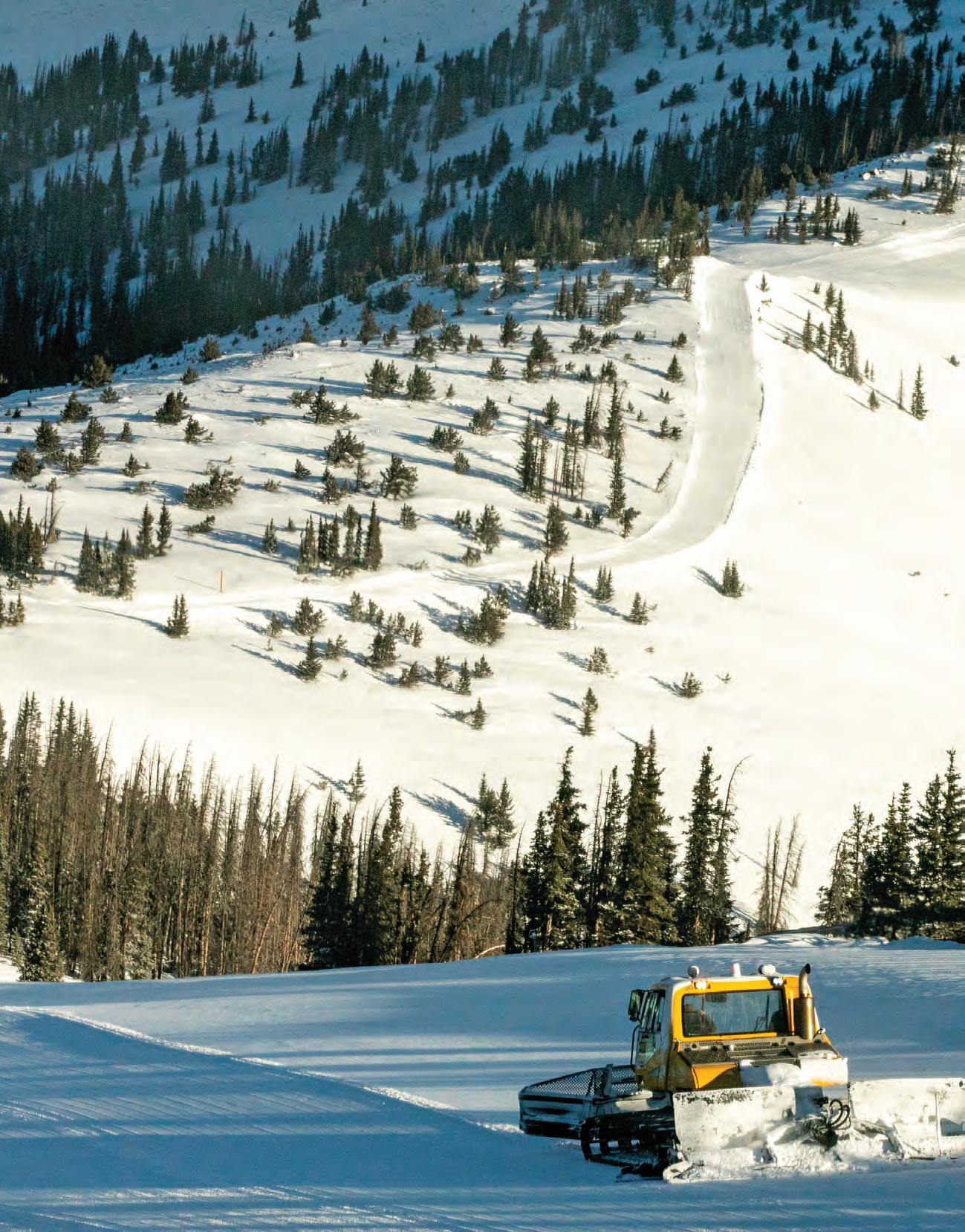

Since the age of 2, the Gunnison Valley has been my home. I grew up surrounded by the earthy scent of sage, the familiar red-brown shapes of the rocks of Hartman Rocks and the smiling, open-armed community. While the world is full of beautiful places, the only one that truly feels like home to me is the Gunnison Valley; the natural beauty of this area will always have a tight hold on my heart.
My parents put me into activities growing up that provided opportunities to further connect with both the community and the natural world: the Peaceful Warriors (a rec-center climbing team), the Gunnison Nordic Team, the Growler (bike race) and the Sage Grouse (distance running race) as well as many outdoor camps in extraordinarily beautiful places such as Gothic.
As idealistic as my childhood might seem, not everything was perfect. For example, if I wanted to hangout with my friends it was pretty much a choice between going to Walmart or Legion Park (which were and still are very popular hangout spots for middle schoolers).
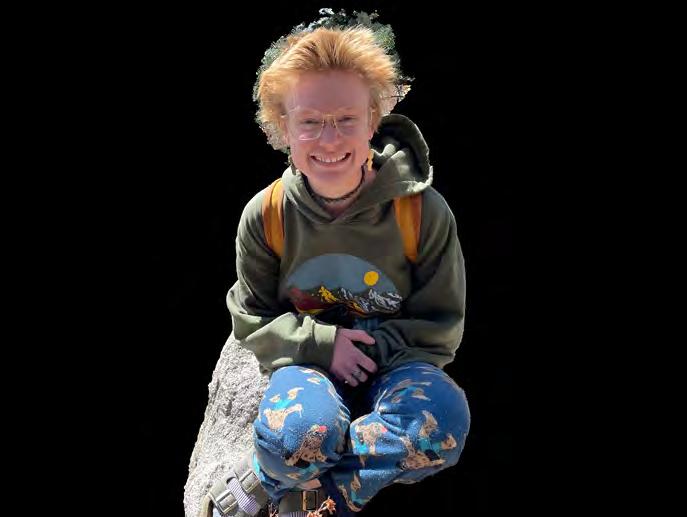

I know the Walmart employees got annoyed at me and my friends for regularly causing havoc in the store, and as much as I love Gunnison’s outdoors, the park got tiresome, not to mention being way too cold to hang out in the winter months — of which there are many extremely cold months. I dreamed of being able to do things like roller skating or playing mini golf with my friends.
One of the most influential experiences I had growing up in Gunnison was the opportunity to attend a newly developed private school in Gunnison named Orsch — which stood for One Room School House. The vision of Orsch was one of inclusivity, a school where each individual person felt normal and not different. Orsch provided a home for many kids who found it hard to fit in at public school. I was quite shy as a child and had some personal insecurities connected to my voice, such as it was very high pitched (my parents liked to call it my Disney Princess voice), and I also had a speech impediment. However, the teachers and students at Orsch made me feel like there was nothing wrong with me.
During this time I also traveled to Colorado Springs
week
figure skating. The girls at figure skating would repeatedly ask me why my voice sounded so funny. Their words had such a negative impact on me that I begged my mom to take me to a speech therapist. The difference in the way I was treated in these two places highlighted to me how blessed I was to be growing up in Gunnison. My time at Orsch made me feel seen as my own person rather than as the girl with the funny voice.
While it might not have always been perfect, growing up in Gunnison has been pretty wonderful. I can’t think of anywhere else I’d rather have spent my most significant and formative years. The nature of this area has always been my safe place, a place where I can truly be myself and not feel judged nor insecure. The scent of the surrounding sage invokes the comfort of home, the gritty sensation of Hartman's dirt on my skin breathes life into me and the tranquil sound of the Gunnison River makes me feel safe. This valley has always been, and will always be my home in the truest sense of the word. n
every for Skye Bleakley enjoying nature.Fr. Andres Ayala-Santiago 970.641.0808
Mass Schedule: St. Peter's, Wisconsin & Georgia, Gunnison Saturday worship 6:30 p.m., Sunday worship 10:30 a.m. 12 (noon) Spanish, Wednesday - Friday Mass 7 a.m. Tuesday Mass 12 noon St. Rose of Lima, Silver St., Lake City Saturday worship 4 p.m. Queen of All Saints, 4th and Sopris, Crested Butte, Sunday Worship 8:30 a.m., Wednesday Mass 5:30 p.m.
711 N. Main 970.641.1860
Sunday Worship Service 10 a.m. Bible Study and Sunday School 9 a.m. Visit www.mountcalvarygunnison.com for information regarding Sunday School, Youth Activities and Adult Bible Study
Pastor Bryon Roberts 1468 Co Rd 17, Gunnison, CO 81230 970.640.8494
bluemesabaptist@gmail.com
Blue Mesa Baptist Church

The Historic 8th Street School 801 N. 8th Street, Gunnison
Pastor Ralph Hull Reformed, Confessional & committed to Expository preaching Sundays 10 a.m. Women's Bible Study 1 p.m. on Thursdays gracegunnison.com
909 N. Wisconsin St. (behind Powerstop) • 970.641.2144
One 9 a.m. service (May-August) Both 9 a.m. and 10:30 am College service (Sept-April) Children's Church & Nursery Offered
For questions, updates or more information check out our website at: gunnisonbethany.com
625 Maroon Avenue, Crested Butte 970.349.6237
We Follow Jesus Check website for service times. Joyful Kids for K-5th Grade Youth and Young Adult Ministries Streaming live online every Sunday Information about various everything happening at OBJC can be found at www.ohbejoyfulchurch.org

107 N. Iowa St. 970.641.0925
Sunday Morning Worship 9:30 a.m. Nursery & Age-Graded Ministry Student & Young Adult Ministry Adult LifeGroups
Office Hours: Mon-Thurs, 9 a.m.-4 p.m.
Join us in-person, Listen at 98.3 FM
Live Stream on YouTube Transforming Lives Building Communities For more info: ccgunnison.com Or email info@ccgunnison.com
Pastor Mike McVey
523 N. Pine • 970.641.1813
Sunday Morning Worship 9:30 a.m. Online Worship @ 9:30 a.m. Nursery & Children's Ministry @ 9:30 a.m.
Adult Bible Study 8 a.m.
LIFE Groups throughout the week Doing life today www.trinitybaptistgunnison.com trinity@trinitybaptistgunnison.com


Sunday 10 am / Wed 7pm
77 Ute Lane (1 Mile East of Town. First left past the cemetery) Nondenominational, Bible Believing Church. (Childcare Available) www.newsonggunnison.net 970-641-5034
99 Cattlemen’s Days PCRA Rodeo 76 Fantasy Ranch 71,75 Gunnison Ar ts Center 19 Gunnison City Clerk 8,66 Gunnison Country Chamber of Commerce 81 Gunnison Valley Observatory 2 I Bar Ranch Summer Concer t Series 51 Lake City Arts Center 49 Lake City Chamber of Commerce 94 Lost Miner Ranch 50 Mountaineer Theatre 27 Pioneer Museum 89 Salida Ar ts Festival 71 Taylor Park Marina 58 Tough Enough To Wear Pink
35 AM Salvage 76 Buff’s Collision Specialists 18 Greatland Log Homes 57 Hargrove & Kidd Construction 95 J Reeser Architect 51 Lake City Auto 73 Mahnke Auto Body 47 Shipman Builders 87 Trout Creek Engineering 70 Wallin Construction
75 Anderson Associates 56 Bank of the West - Crested Butte 79 BenchMark Mor tgage 3 Bluebird Real Estate 88 Bluebird Real Estate - Bobby Overturf 11,93 Bluebird Real Estate - Brian Cooper 80 Bluebird Real Estate - Steve Mills 36 Clarke Agency 37 Community Banks of Colorado 7 Coldwell Banker Mountain Properties 21 Gunnison Bank & Trust 38 Gunnison Real Estate & Rentals 51 Hall Realty 64 LIV Sotheby’s International Realty 97 Nesbitt & Company 9 RE/MAX Community Brokers 4 TAVA Real Estate 77 Today Realty
RESTAURANTS
& Spirits 88 Backcountry
Acres
Taylor
15 Ol’ Miner Steakhouse 34 Powerstop 87 Rocky Mountain Chocolate Factory 29 TACOCAT TACO CART 43 The Coffee Trader 41 The Dive 51 The Matterhorn Motel
77 Equip Bookkeeping 59 gO Or thopaedics 31 Grace Covenant Church Gunnison 23 Gunnison County Electric Association 35 Gunnison Country Food Pantry 65 Gunnison Shipping 84 Gunnison Vitamin & Health Food Store 100 Gunnison Valley Health 55 Gunnison Valley Hospital 23 Gunnison Watershed School District 81 Home Together Veterinary Services 65 Living Journeys 74 Mountain Fireplace Specialists 39 Mountain Legacy Veterinary Center 19 Nunatak Alternative Energy Solutions 35 Quick Draw Carpet Cleaning 116 Sustainable Tourism & Outdoor Recreation 53 VSON Alpine Or thopaedics & Neurosurgery 20 Western Colorado University Field House Fitness Center 32,33 Western Colorado University Communications & Marketing
67 Abracadabra 25 Ace Hardware - Crested Butte 63 Alley Hats 51 Blue Bird Boutique 27 Blue Mesa Music Store 79 Boom-A-Rang 31 Diamond Pool & Spa 73 Deer Creek Blinds 67 Flairmont Furniture 83 Fullmer’s Ace Hardware 5 Gene Taylor’s 85 Gunnison River Fly Shop 29 Hi Country Carpet & Tile 5 High Mountain Liquor 85 Hope & Glory 49 Lake City Liquors 90 Last Ditch Thrift 62 Murdochs - Salida 25 OffCenter Designs 90 Paradox Footwear 84 Pawsitively Native 63 Pfister’s Handworks 63 Pooh’s Corner 7 Pure Fire Cannabis 50 Russ Brown Gallery 89 Tango 11 Toggery Elevated 13 Trader’s Rendezvous 13 Treads ‘N’ Threads 74 West Elk Creative 87 Zacchariah Zypp & Co






